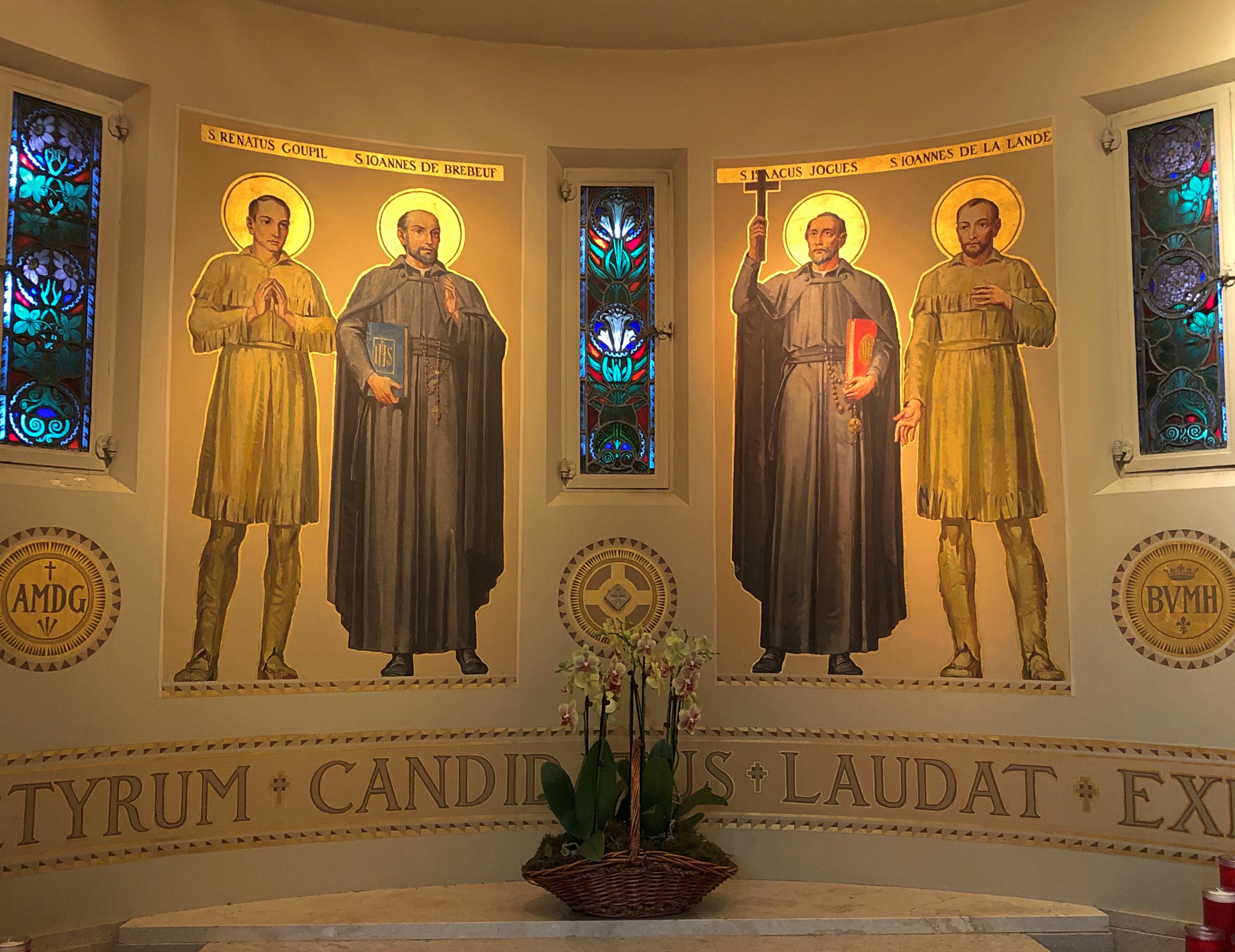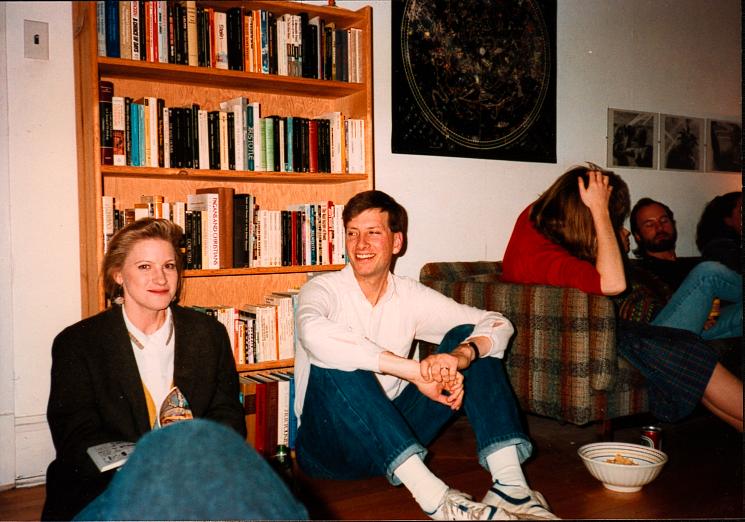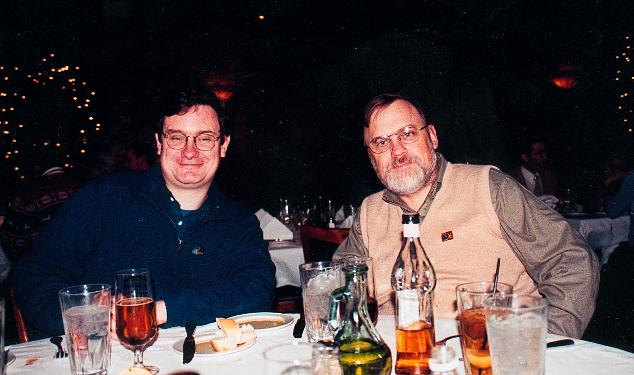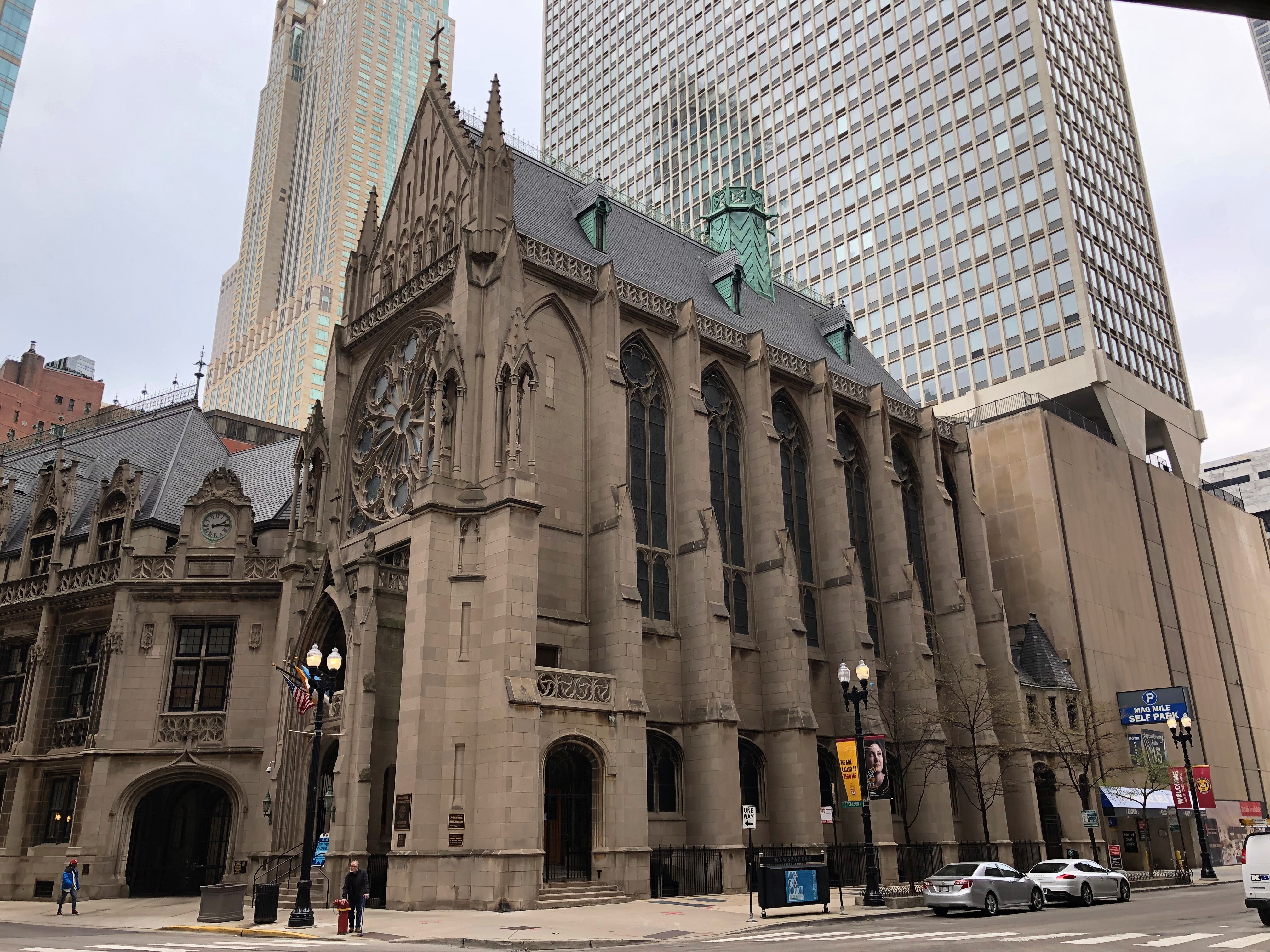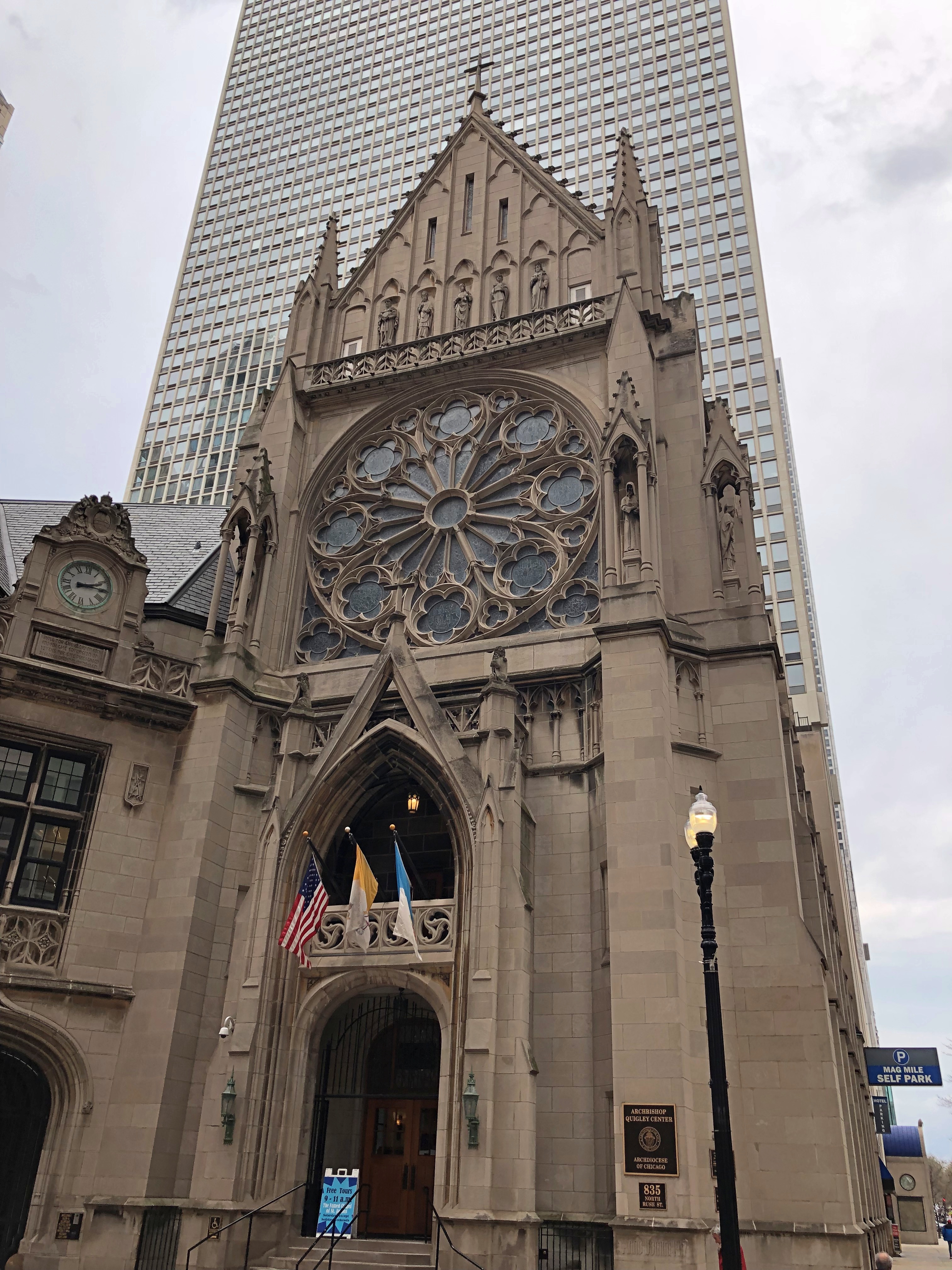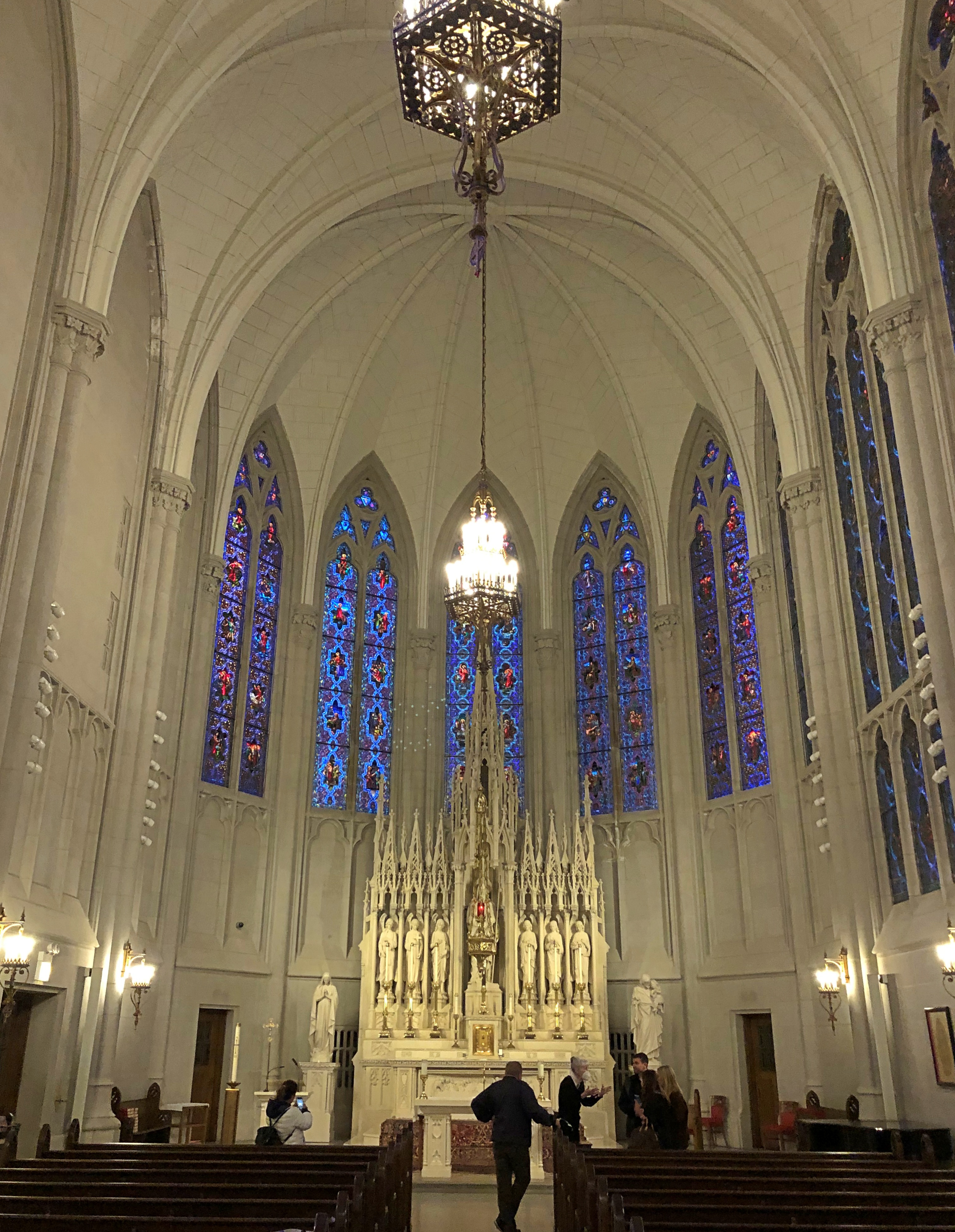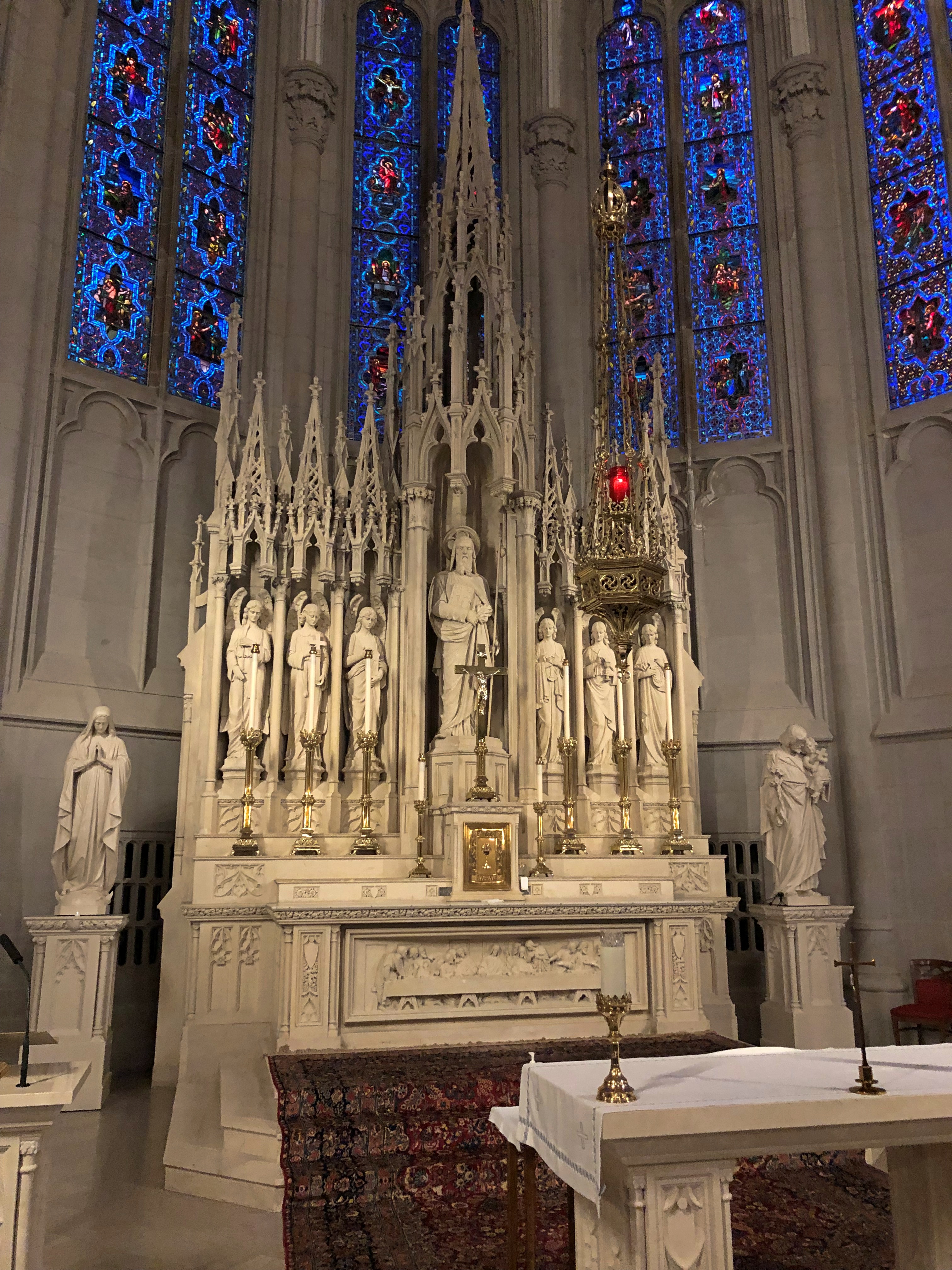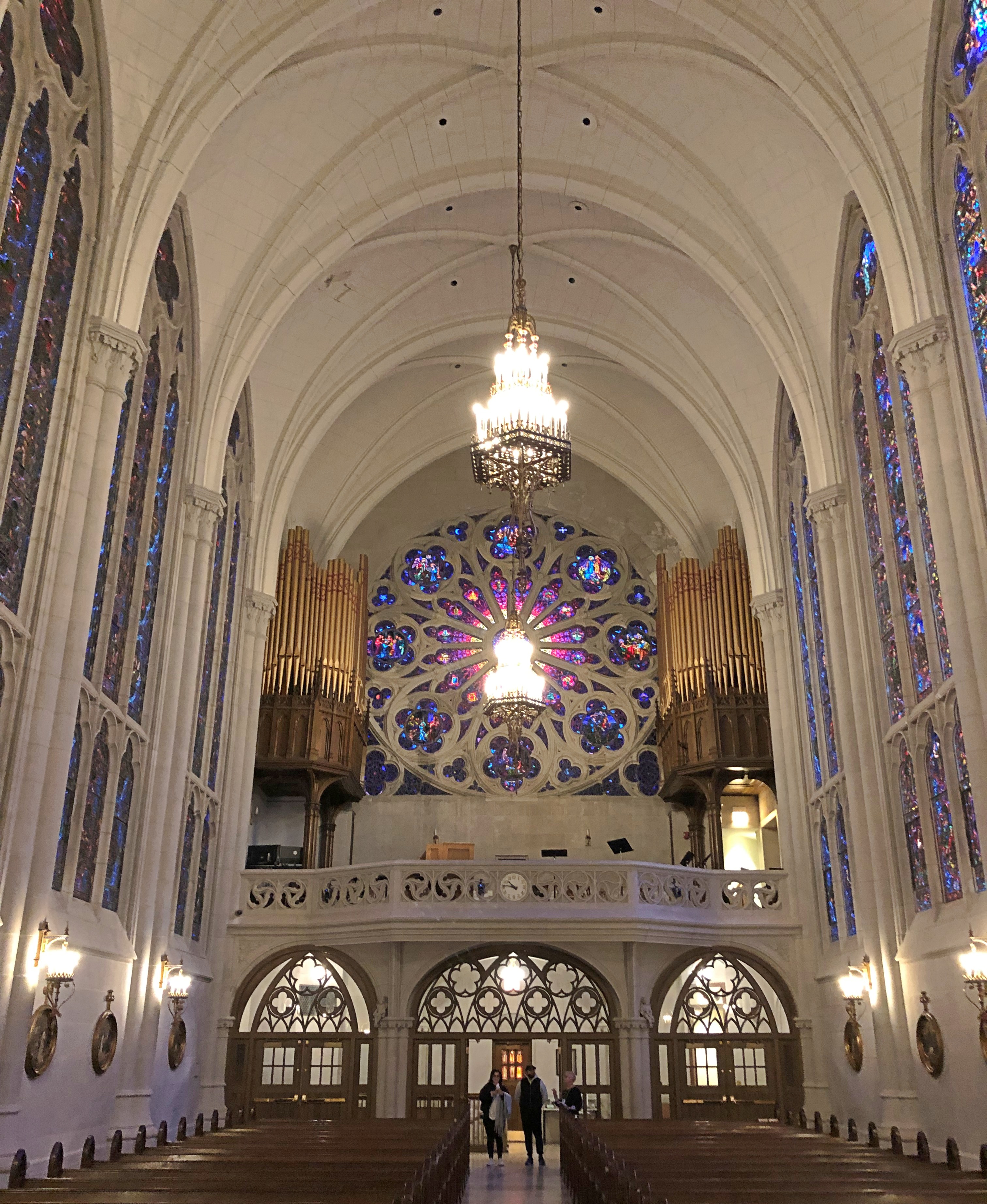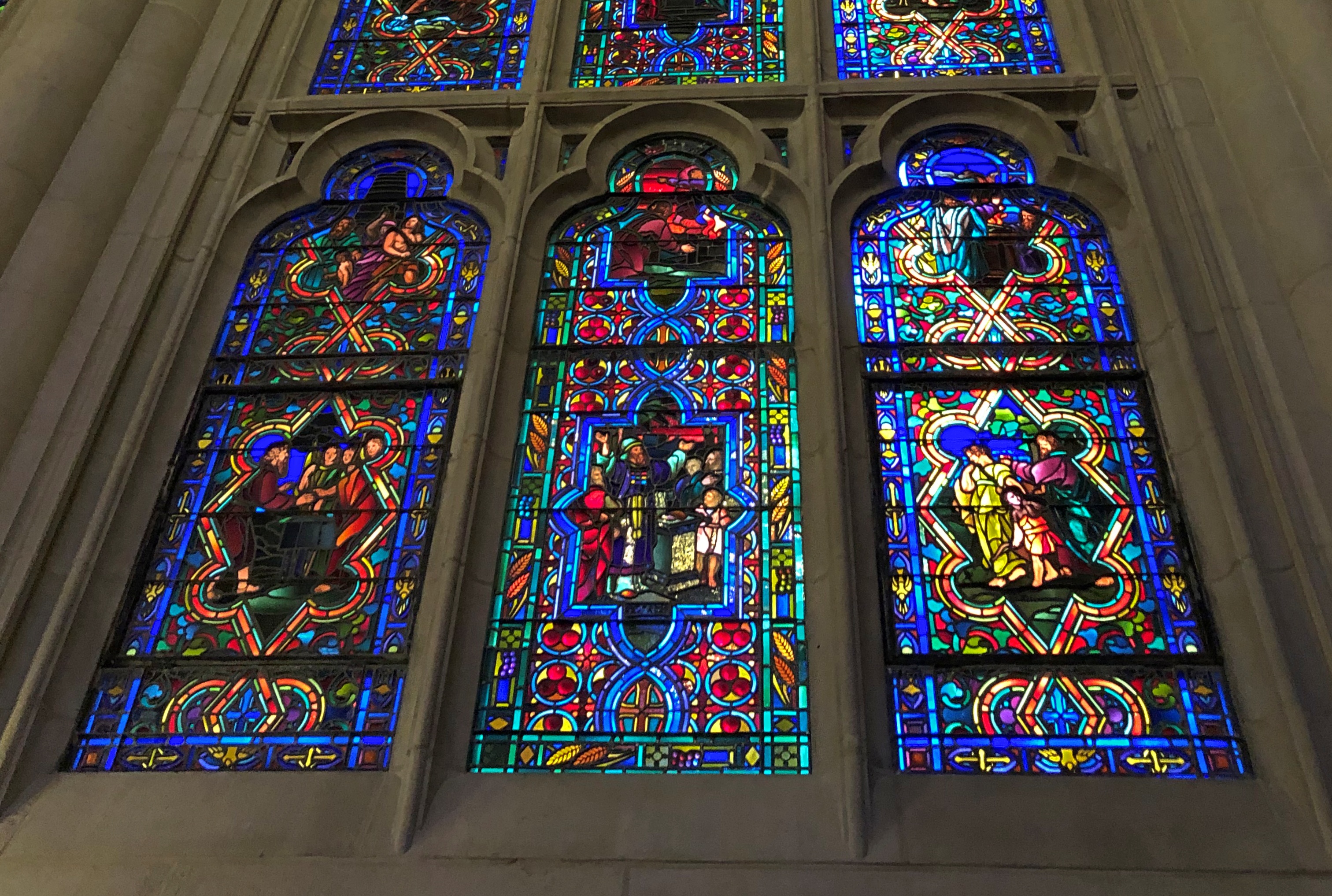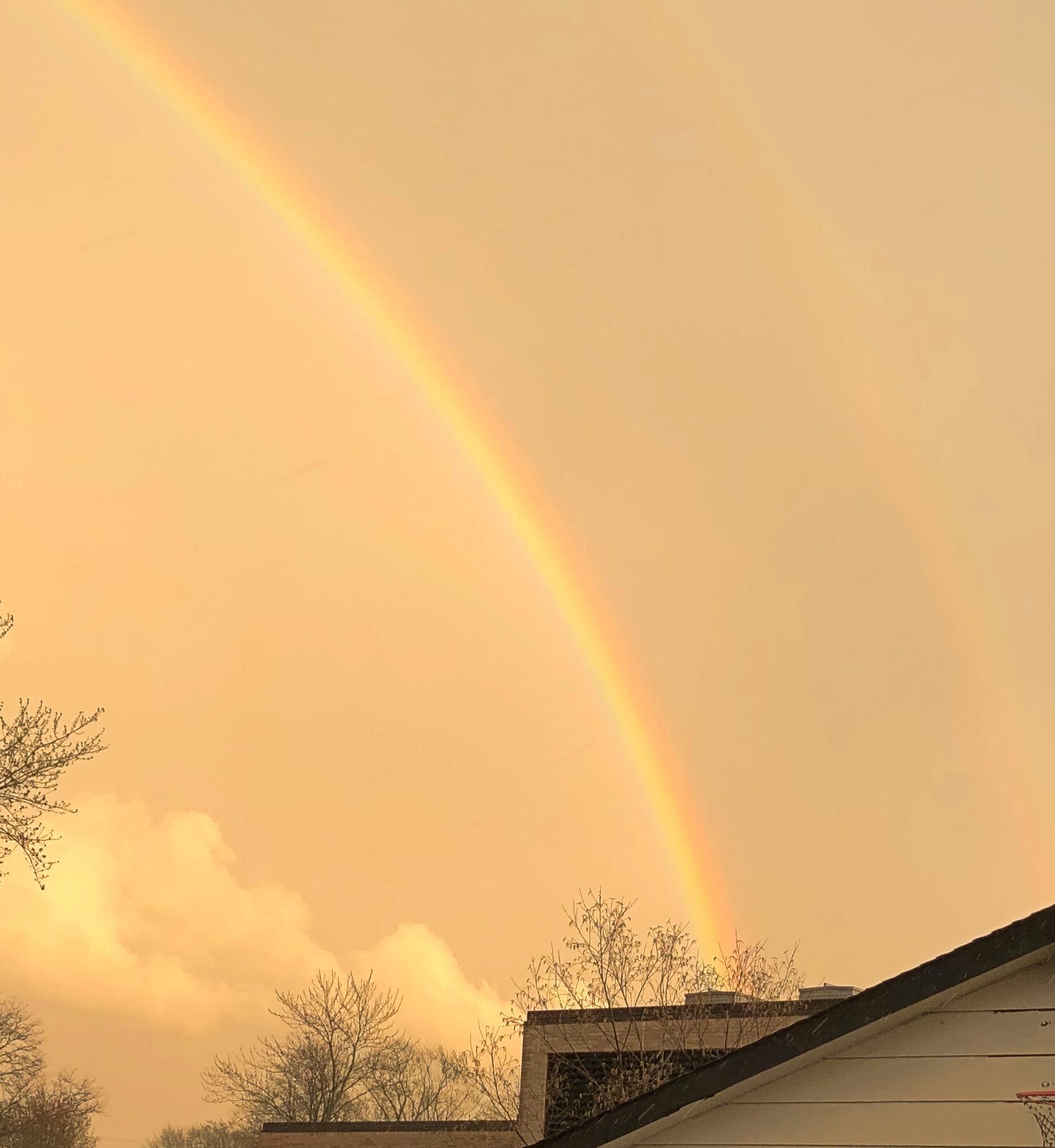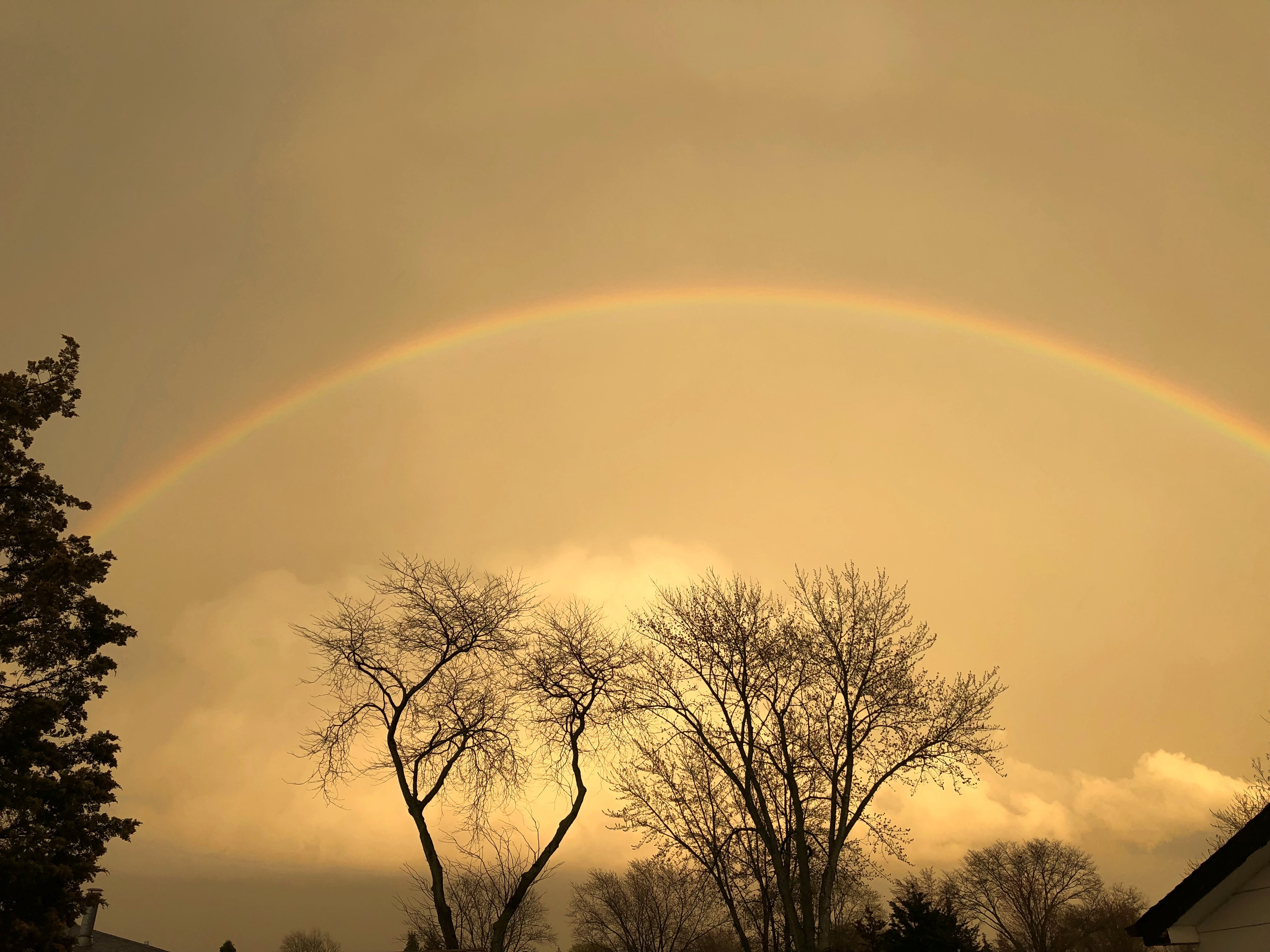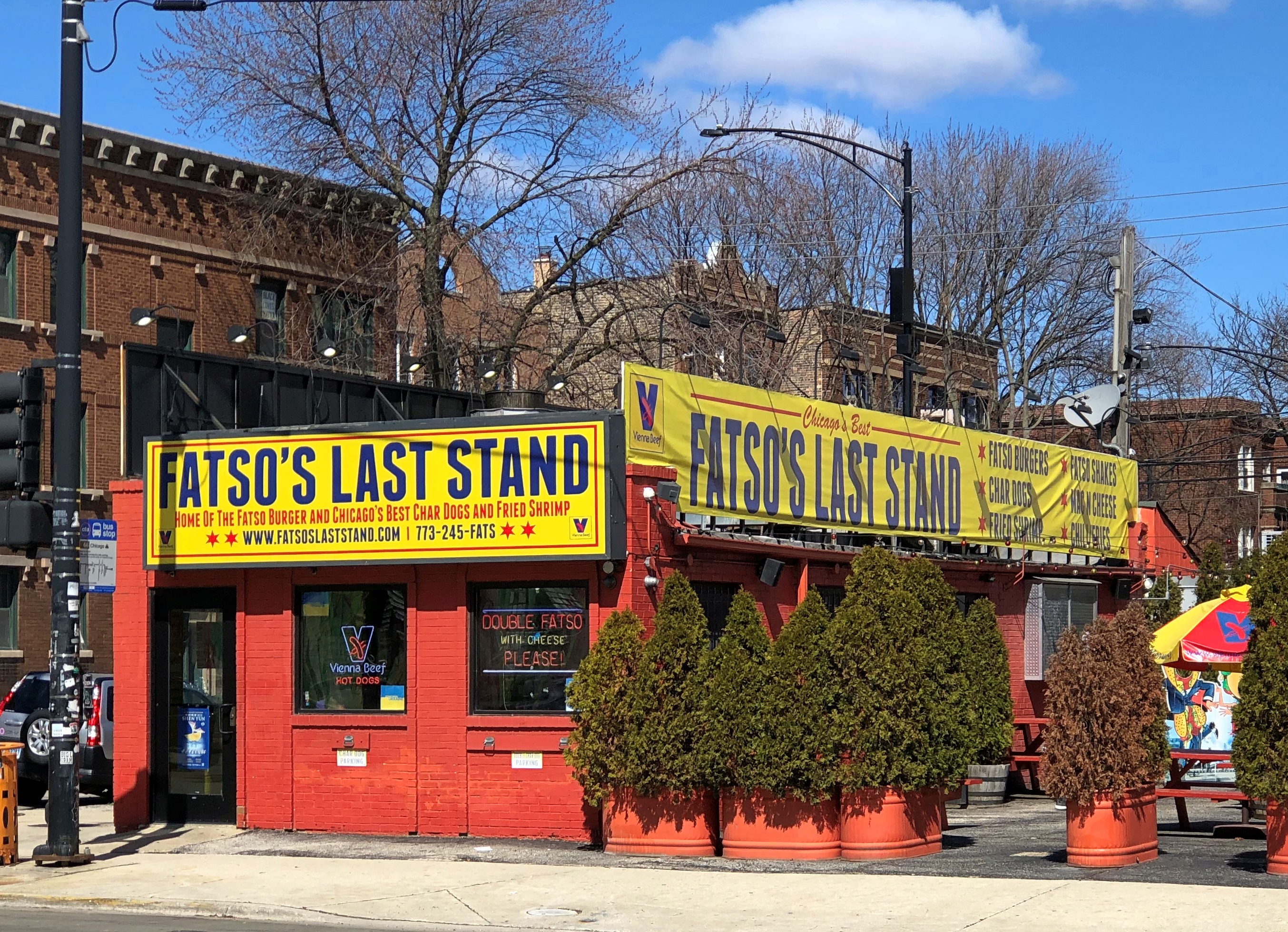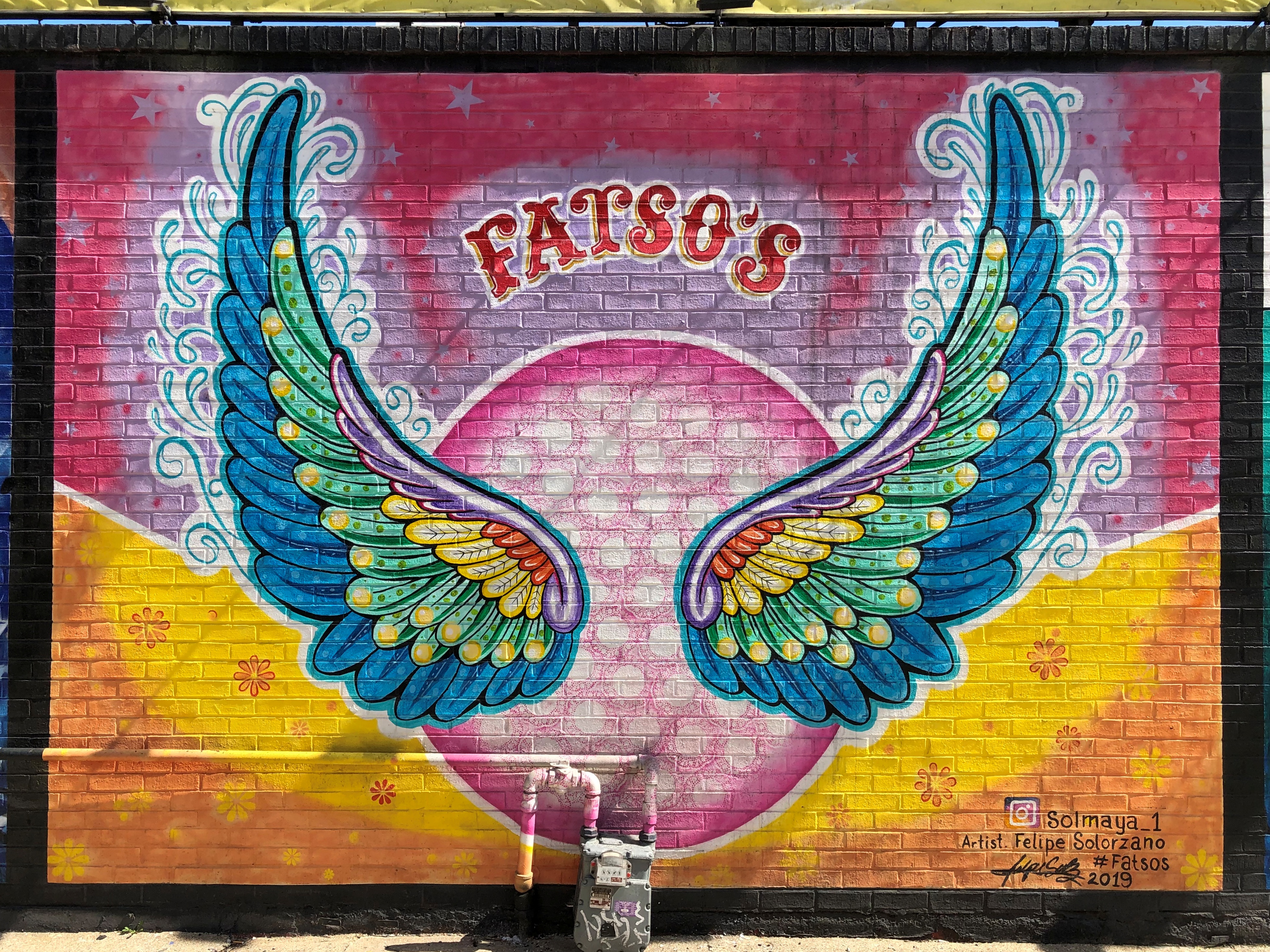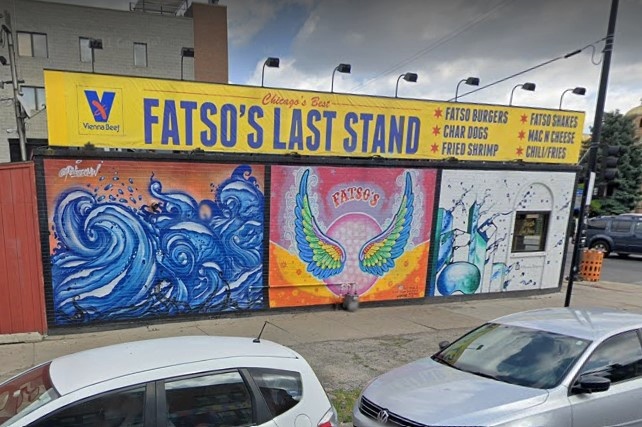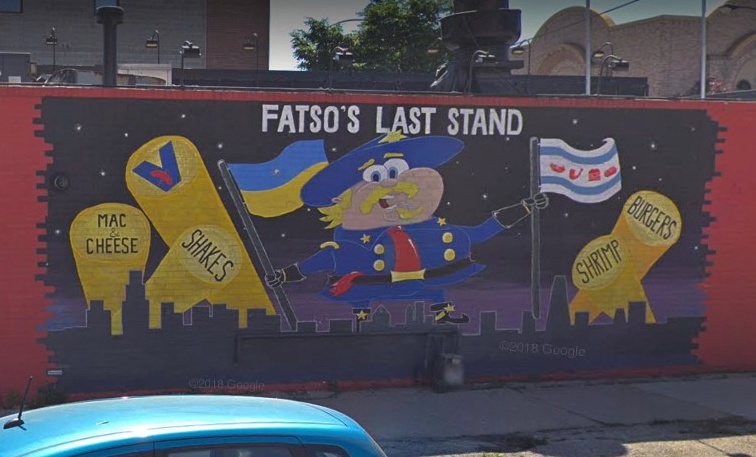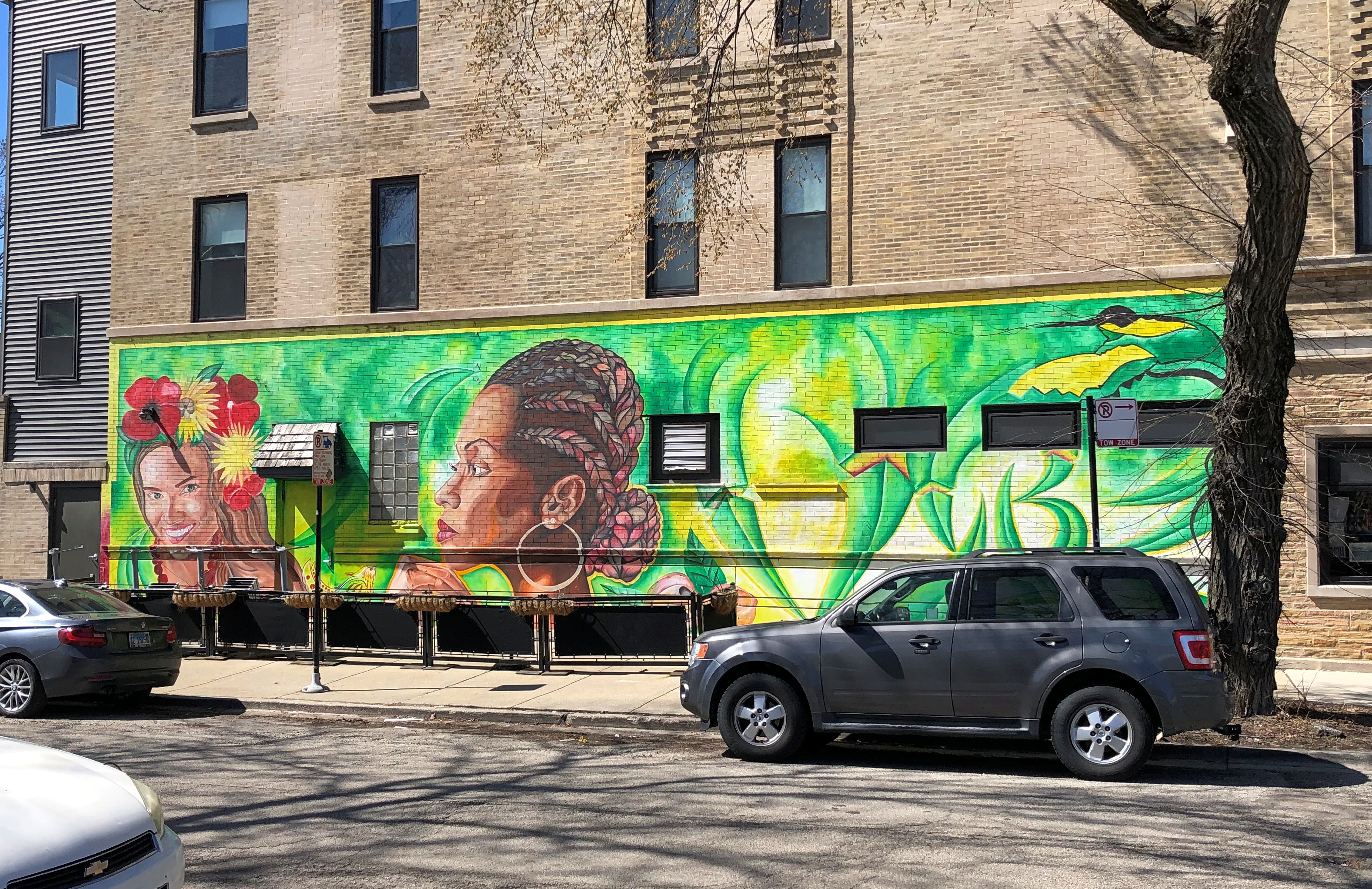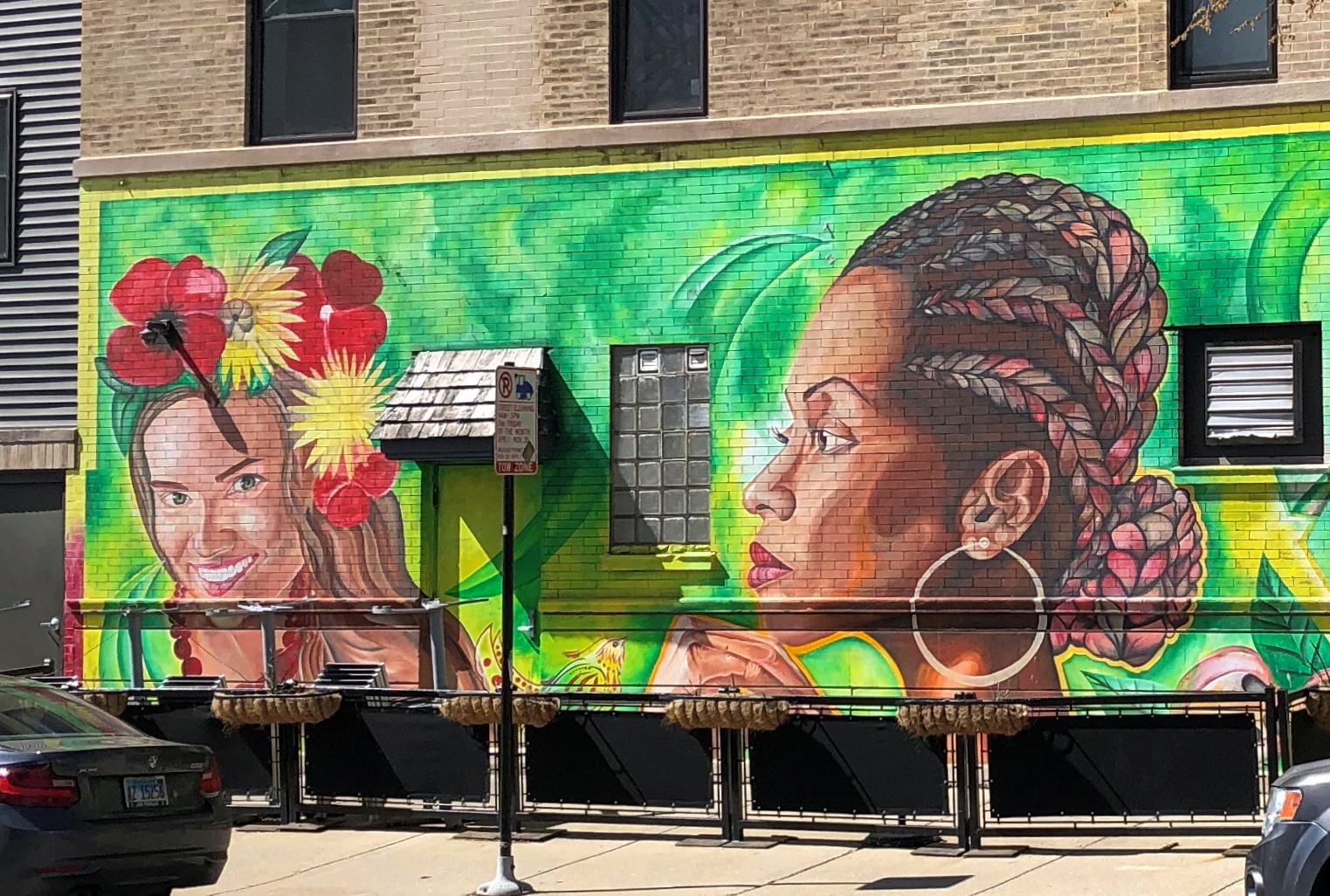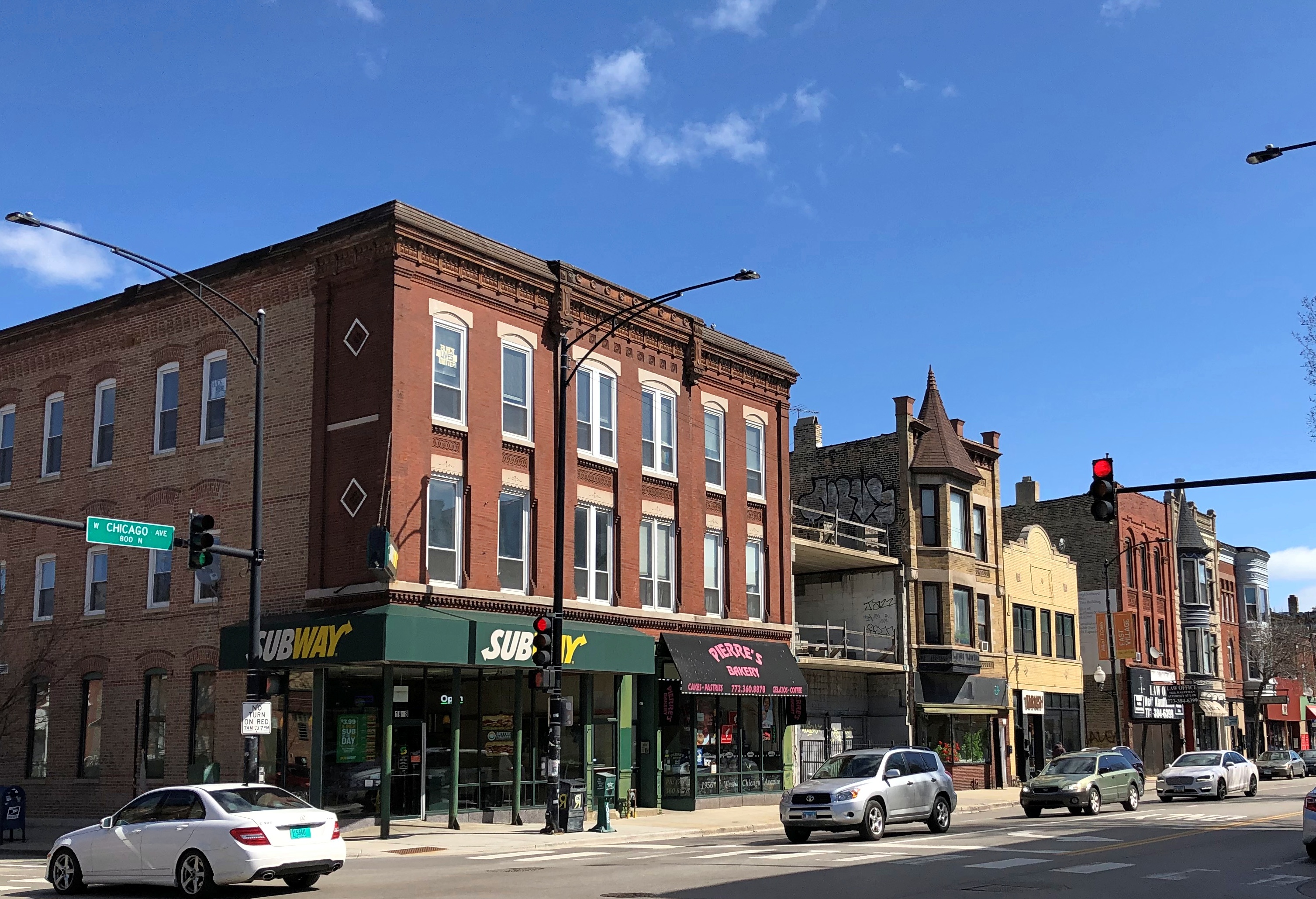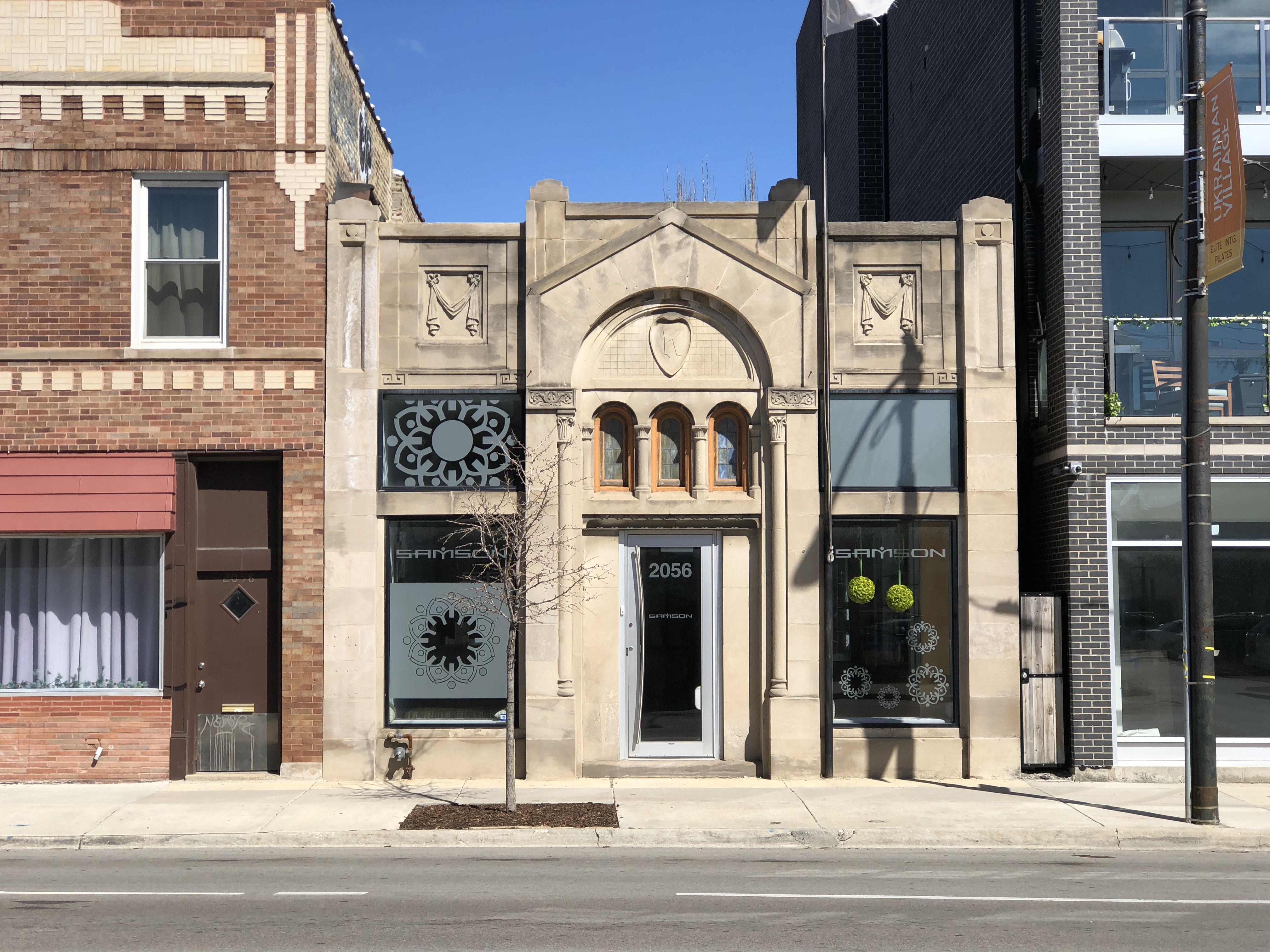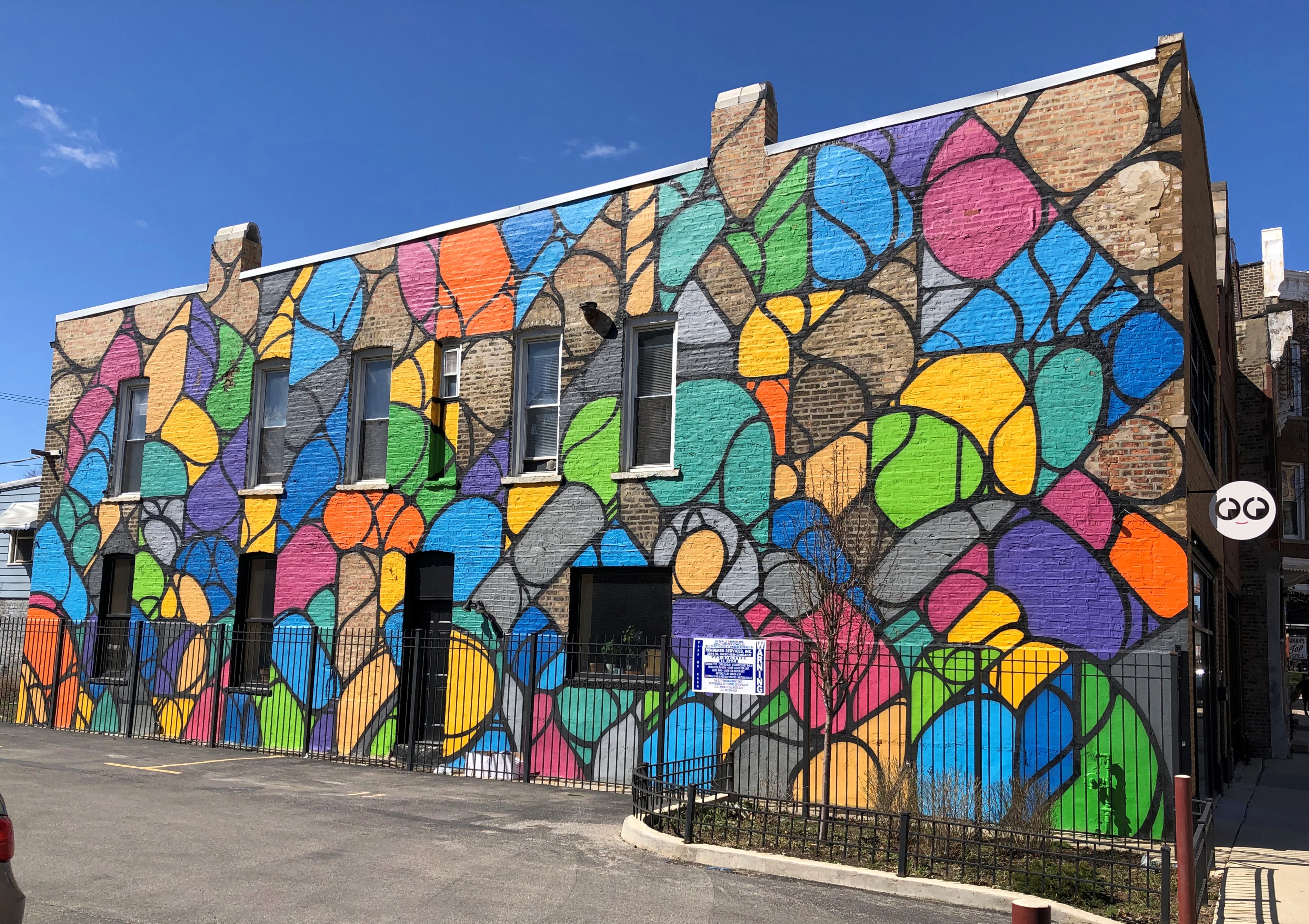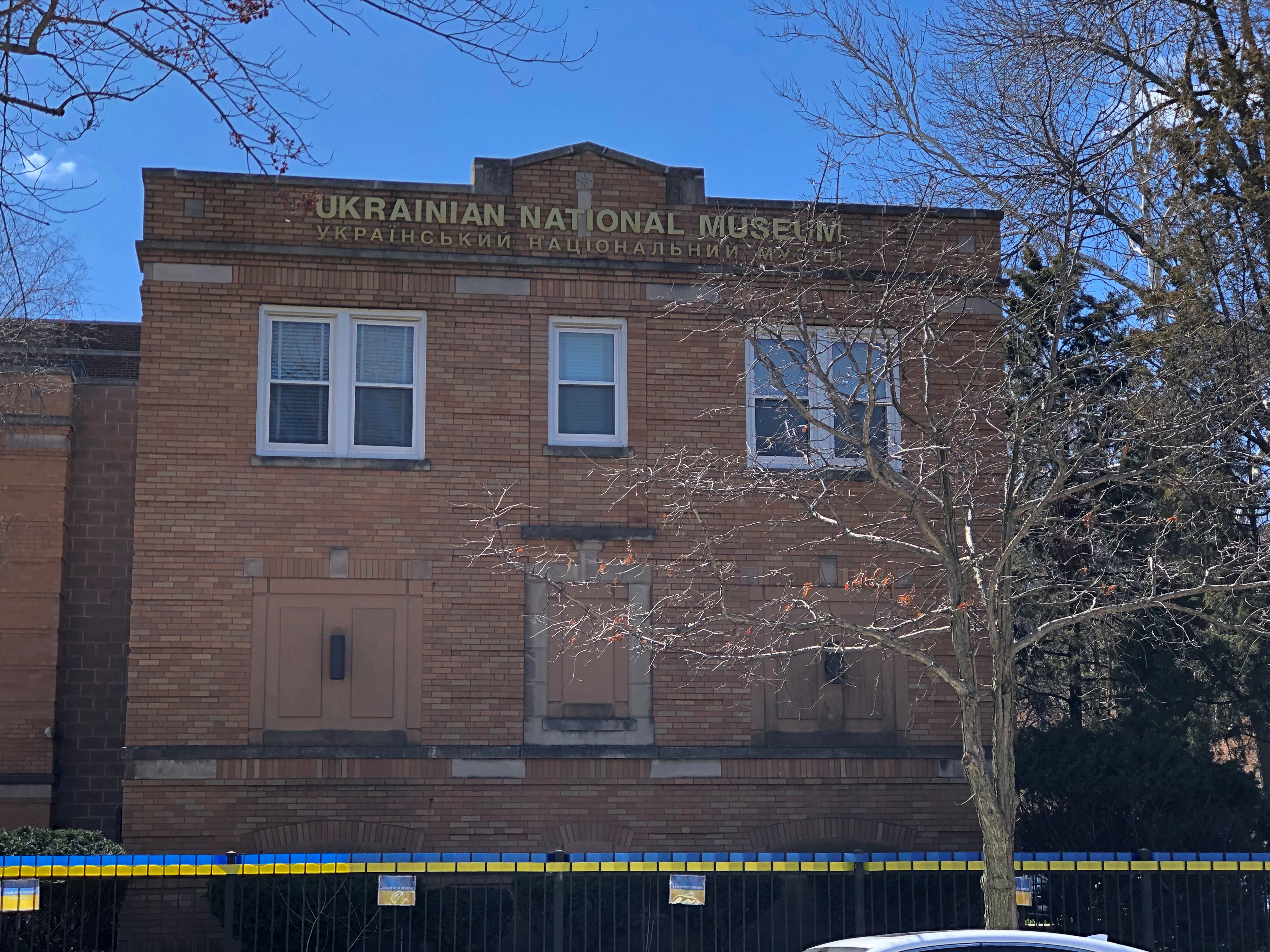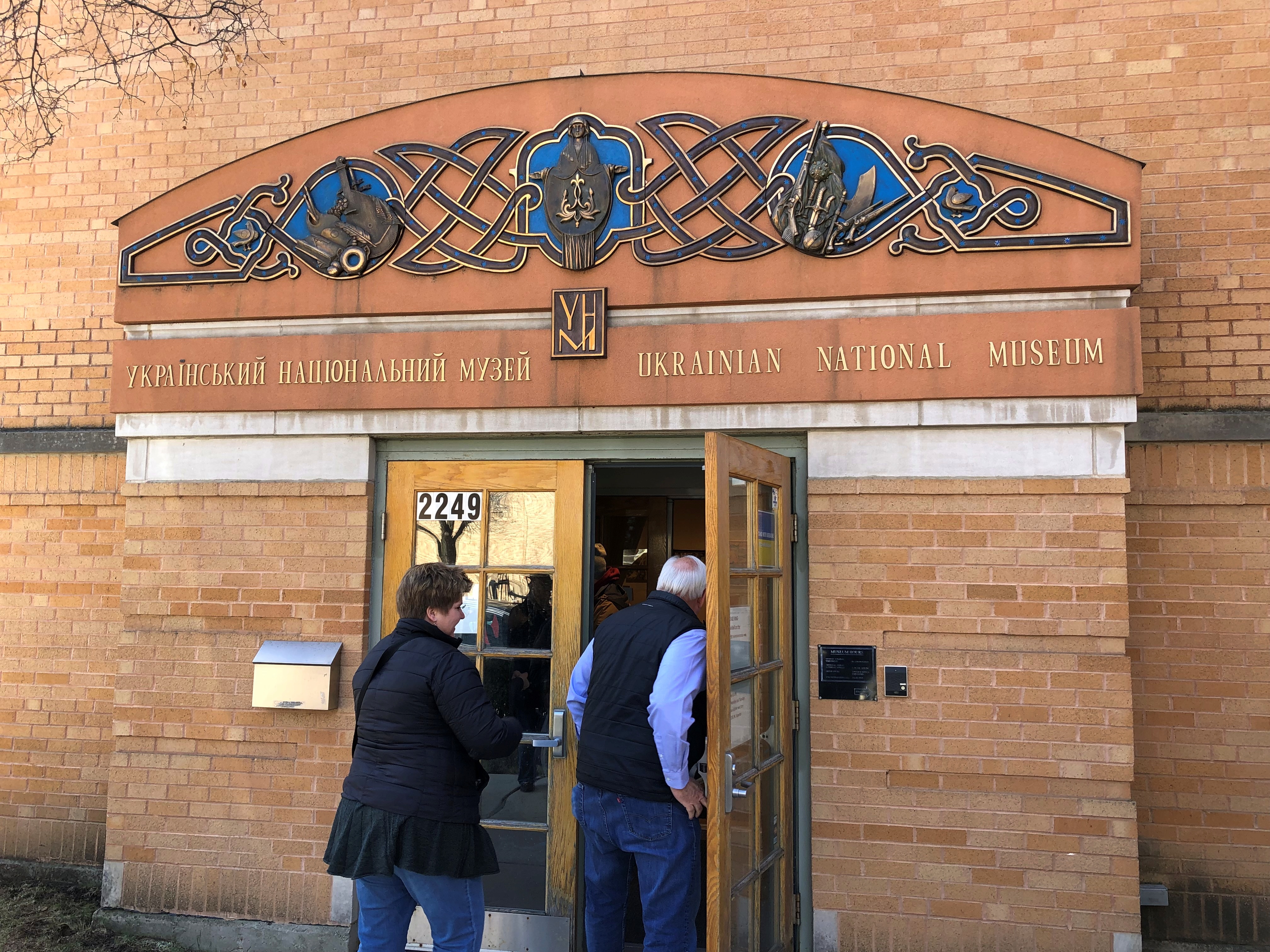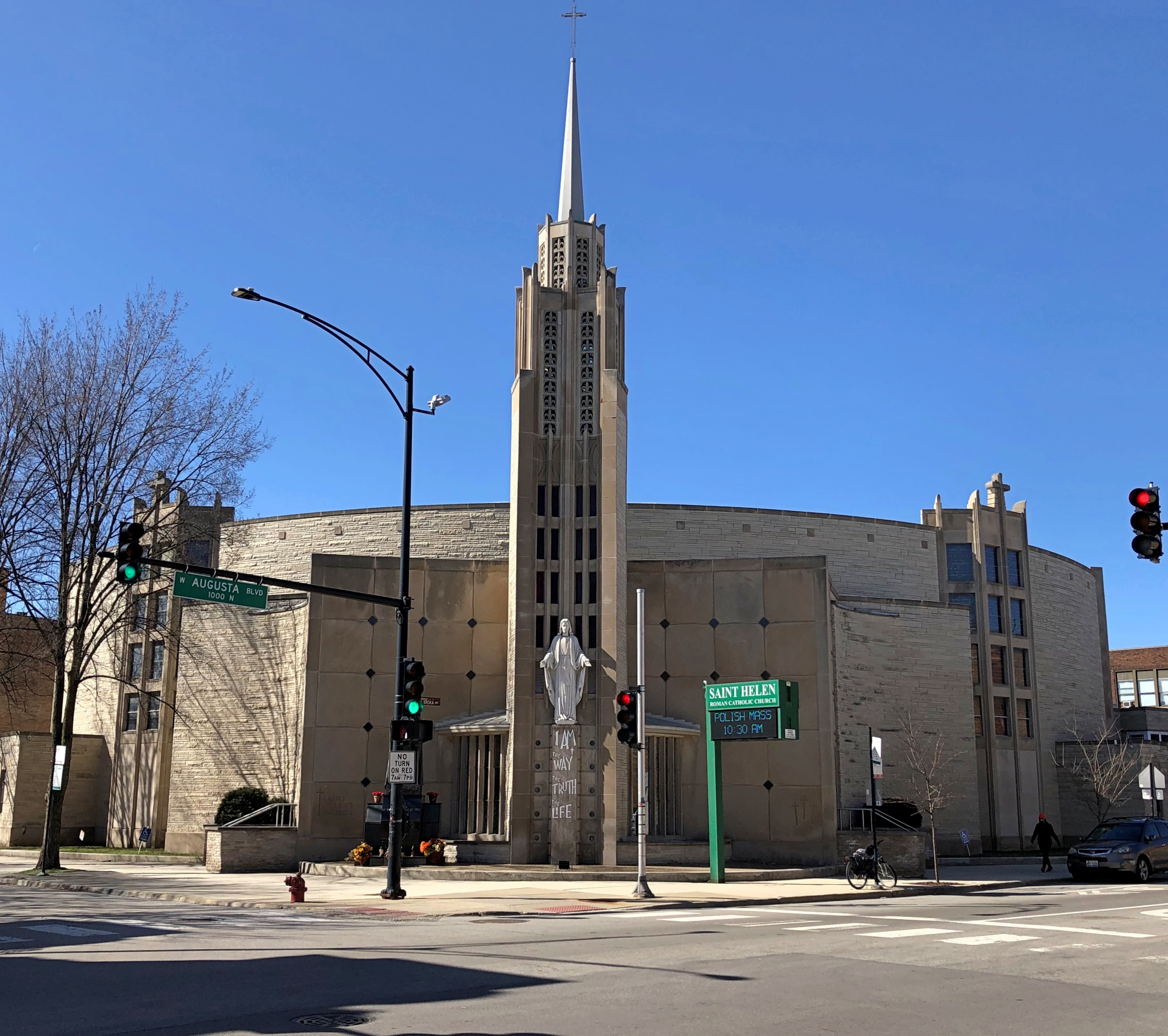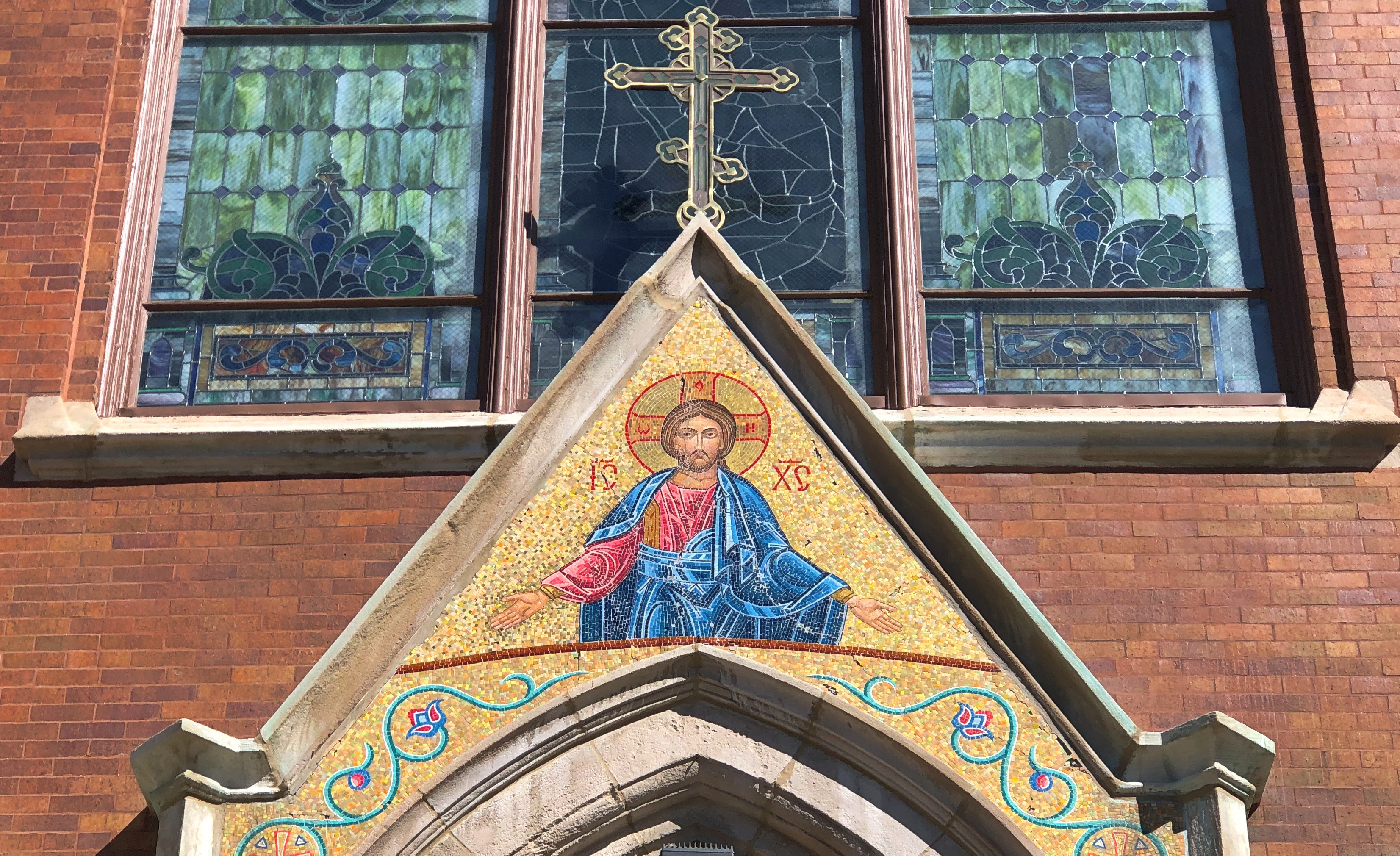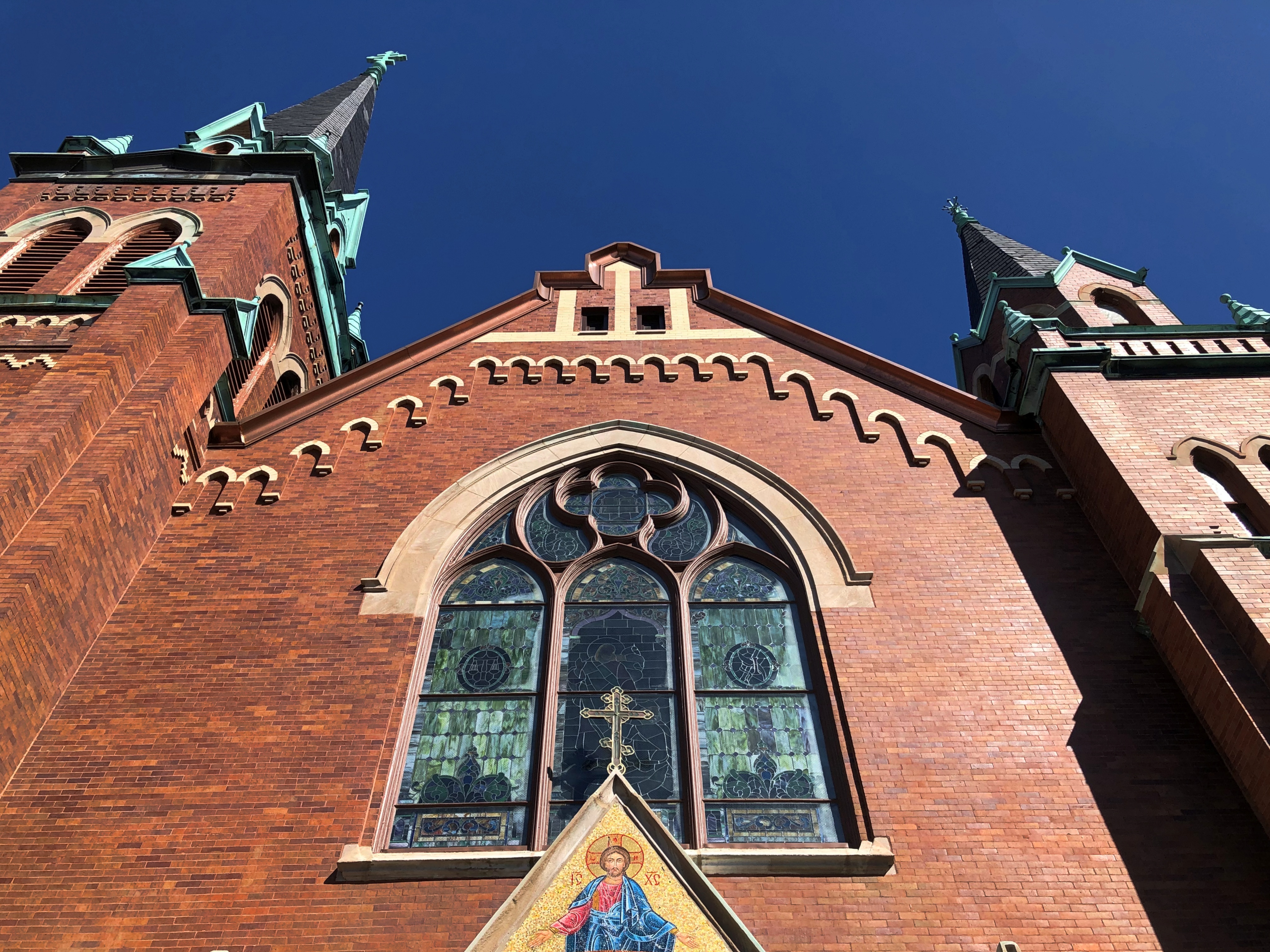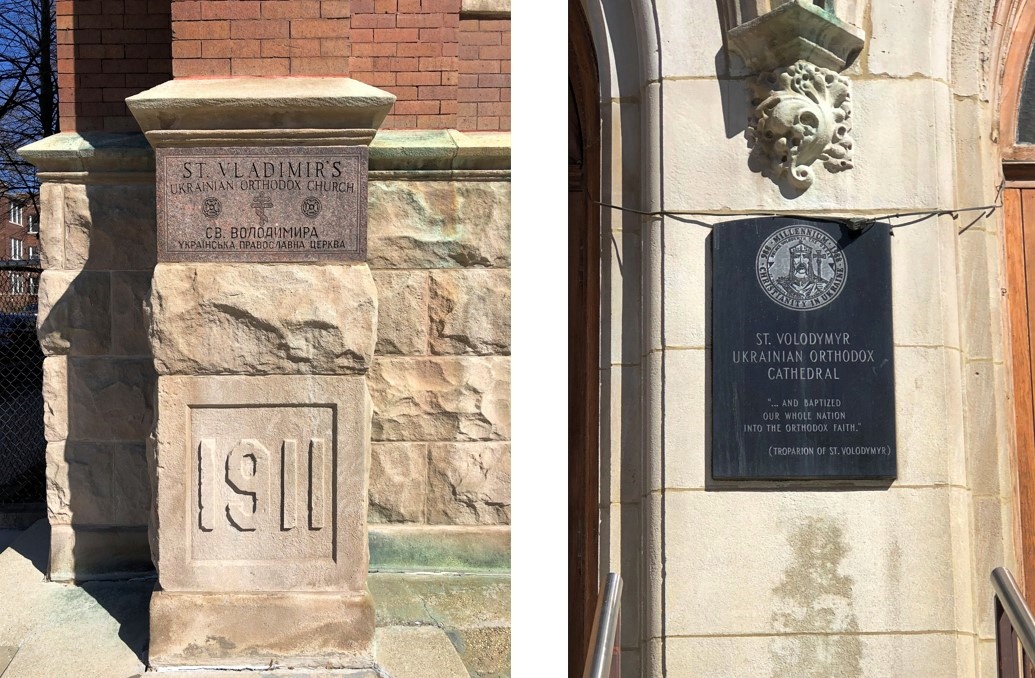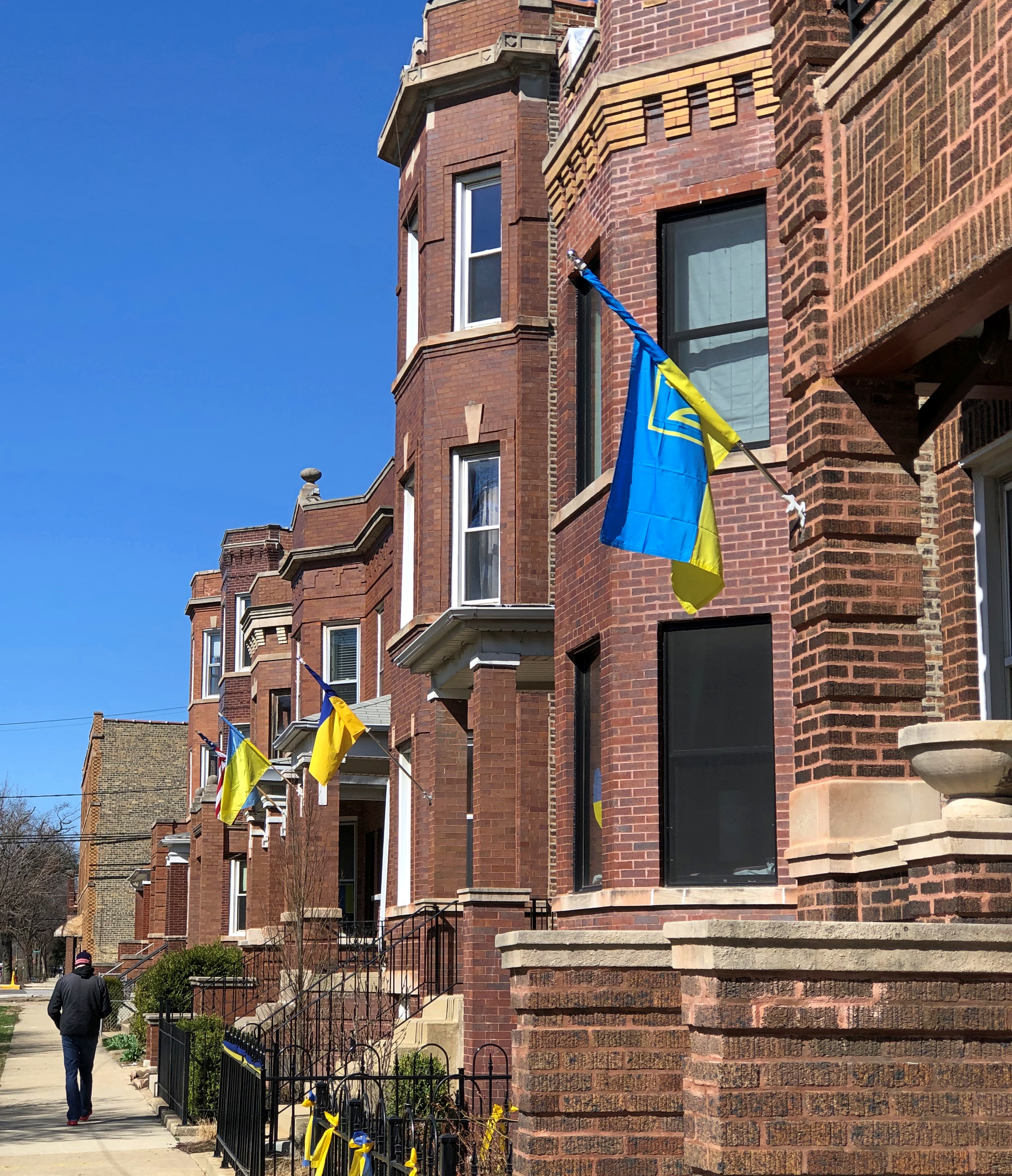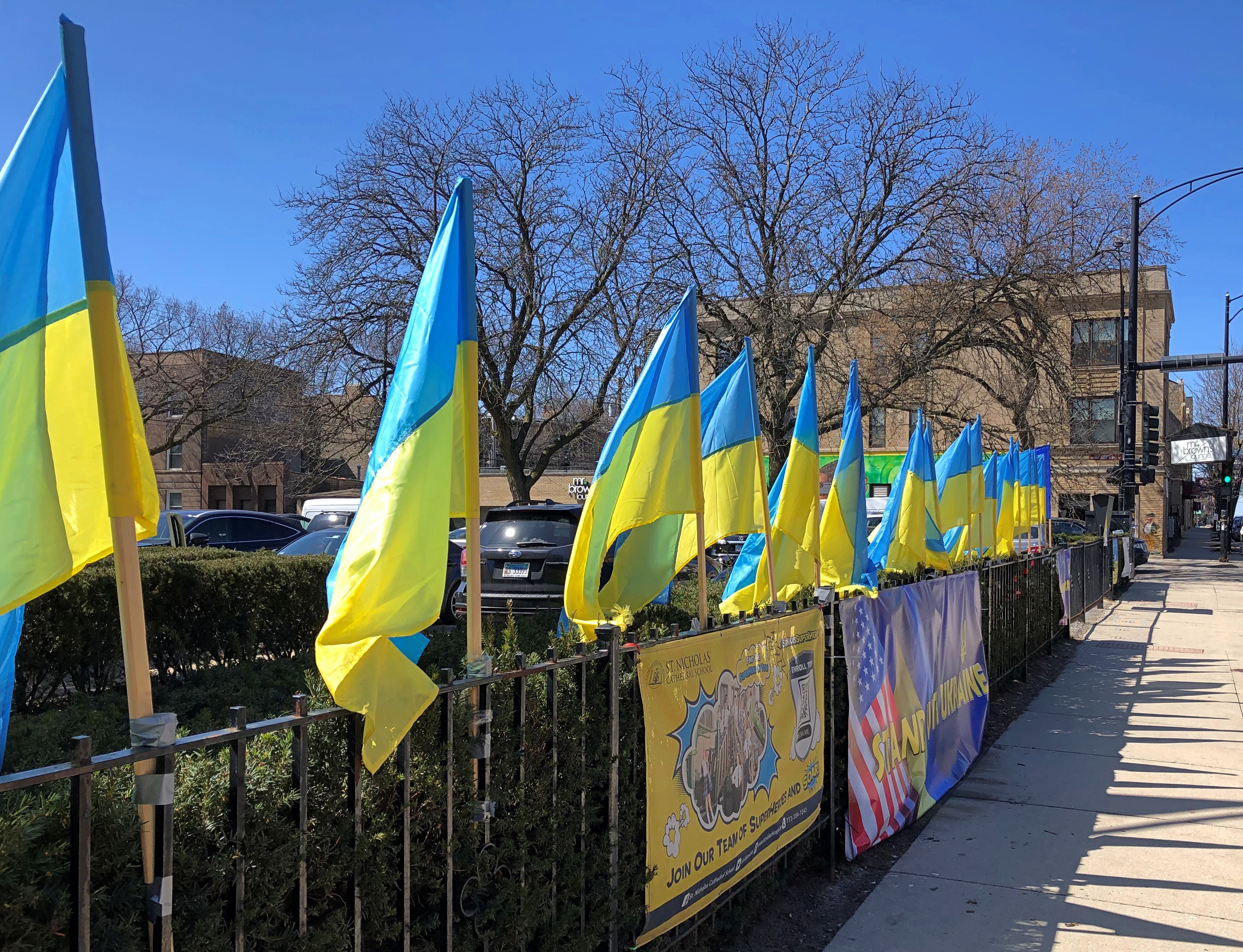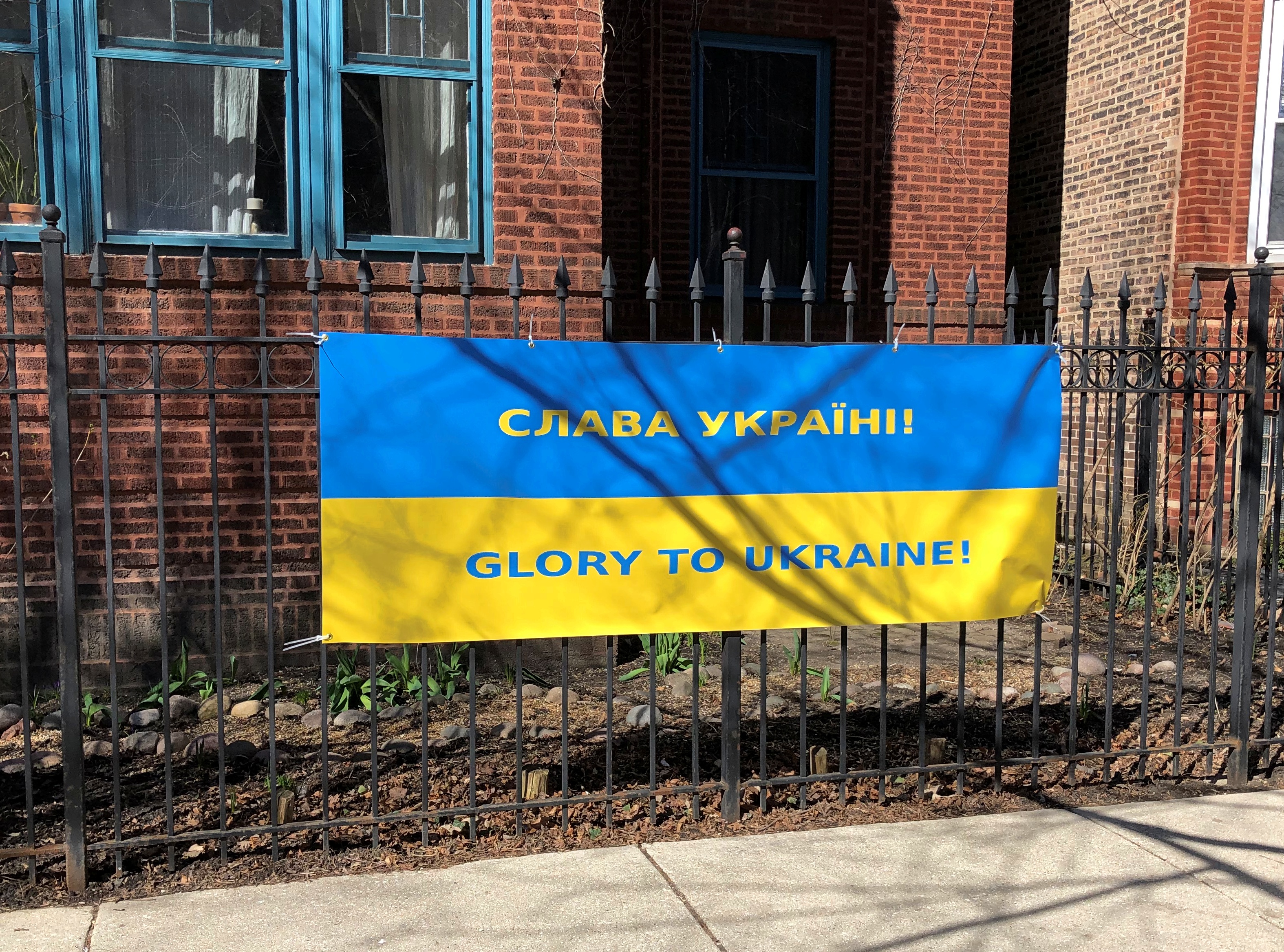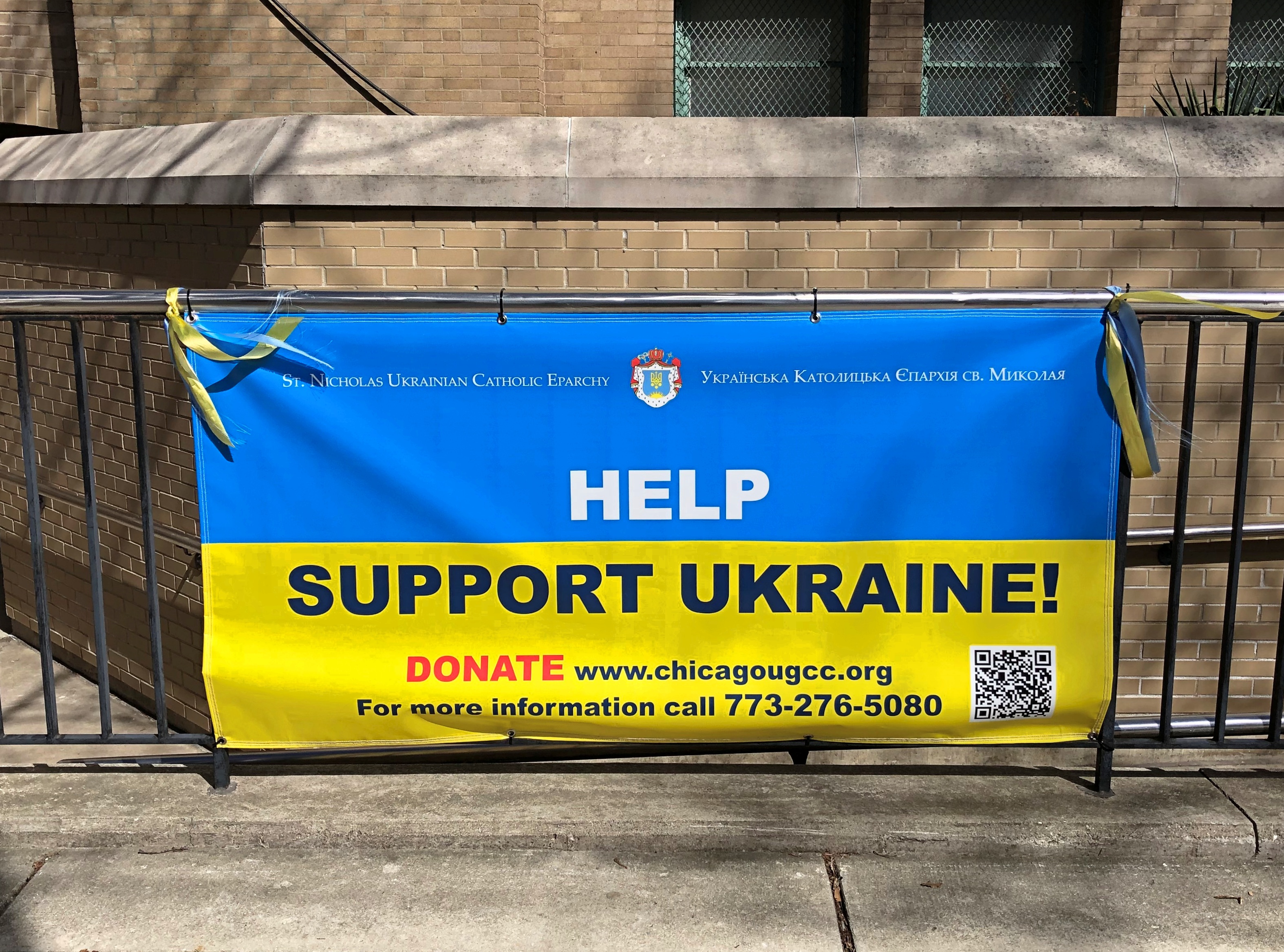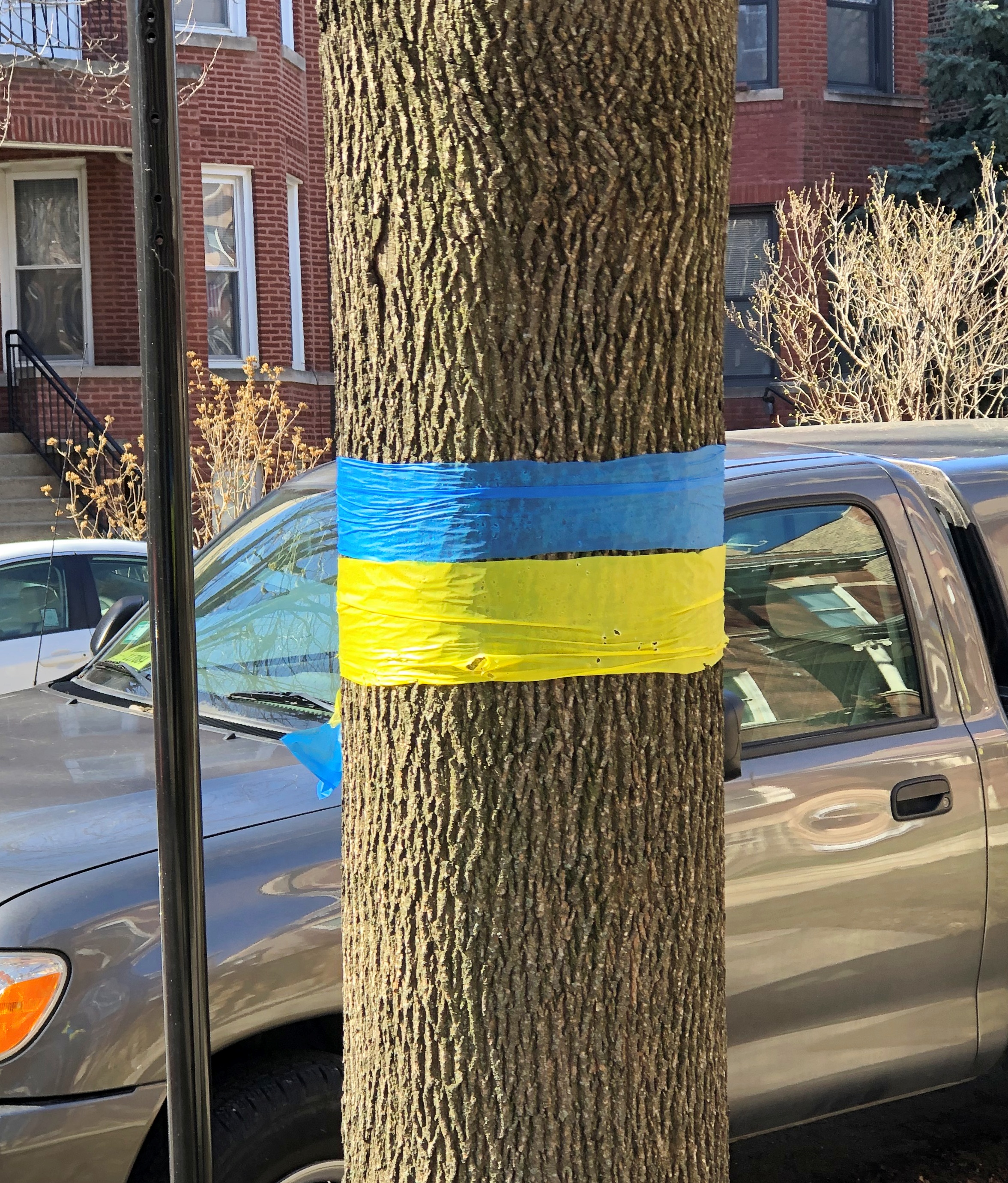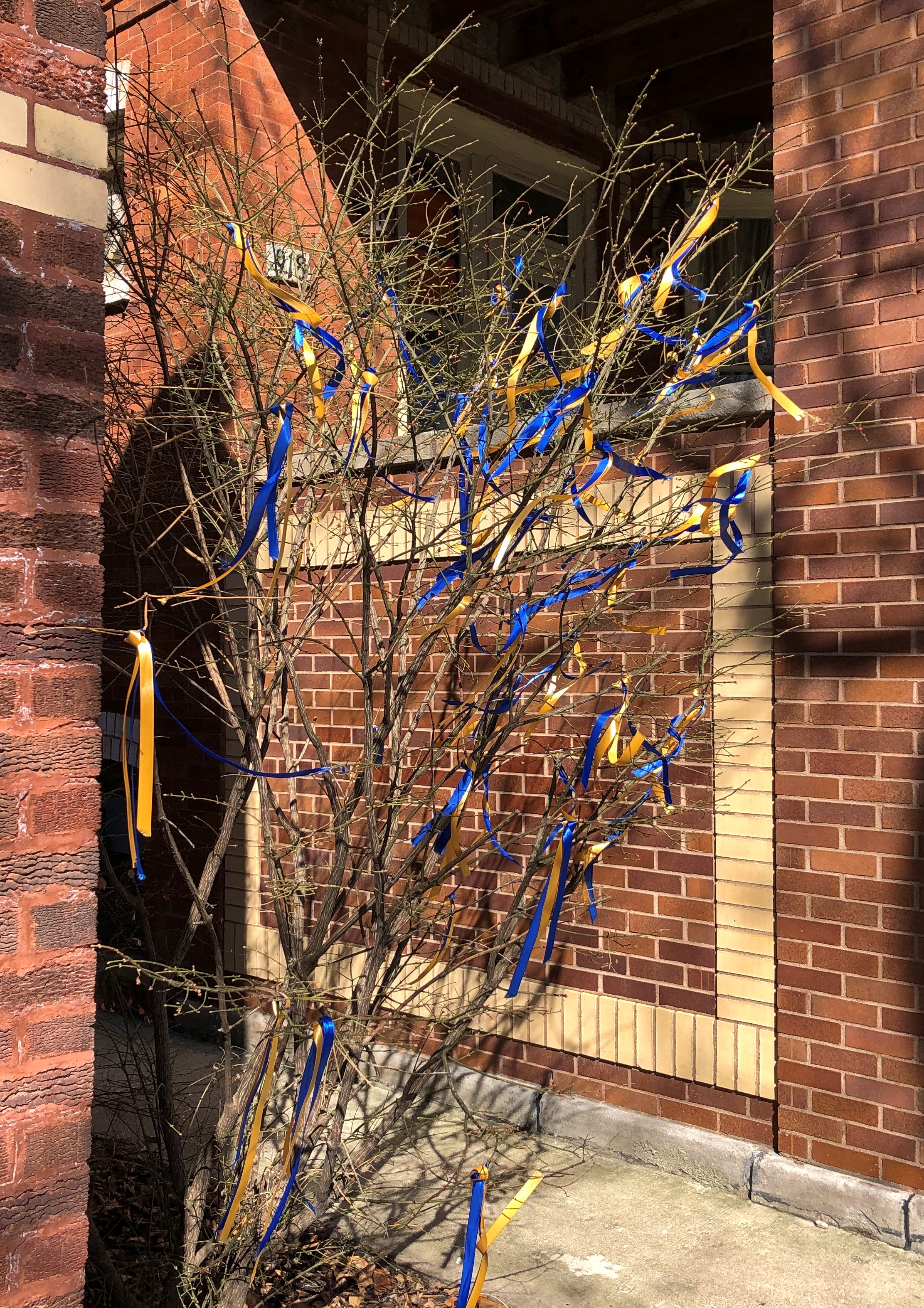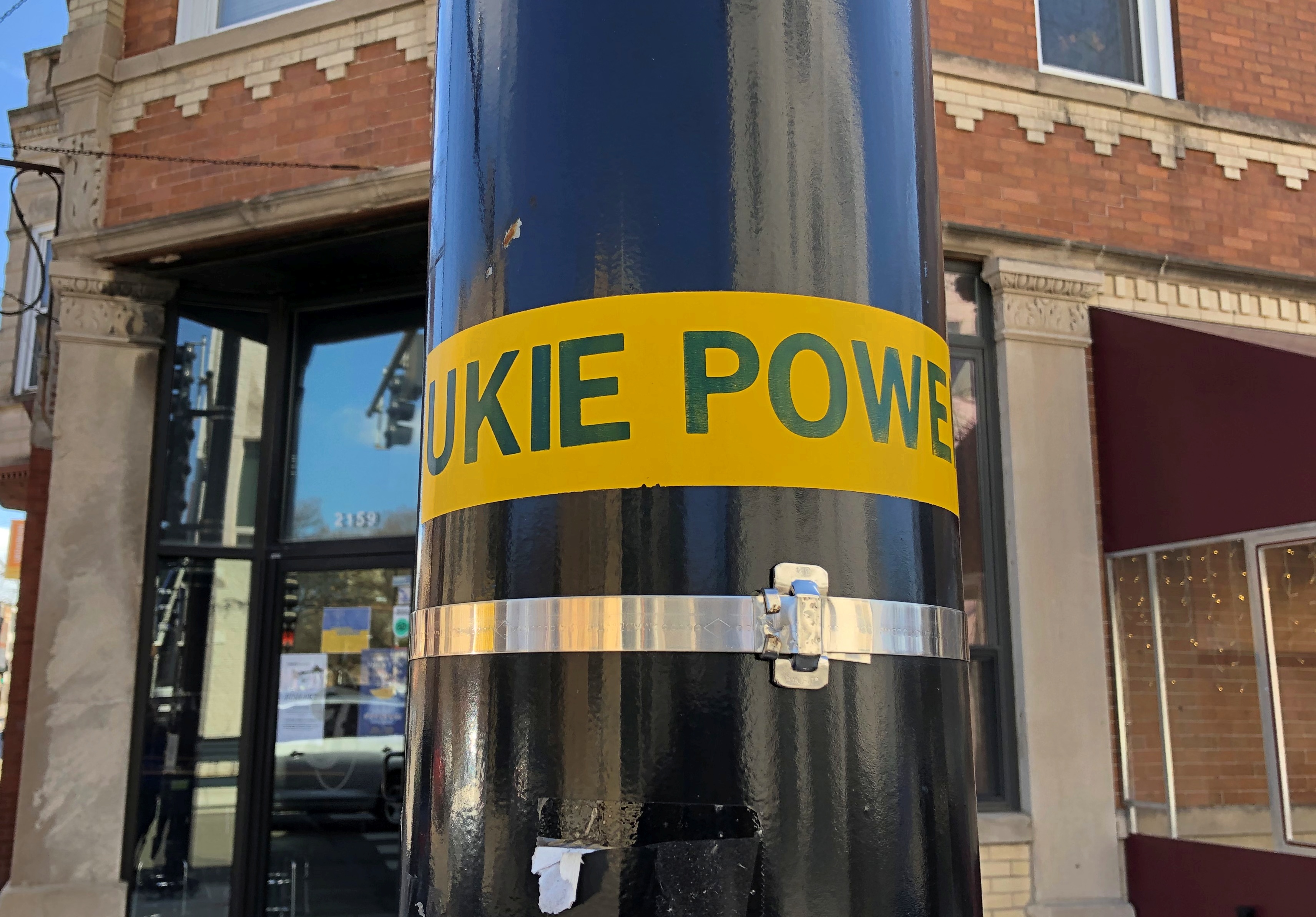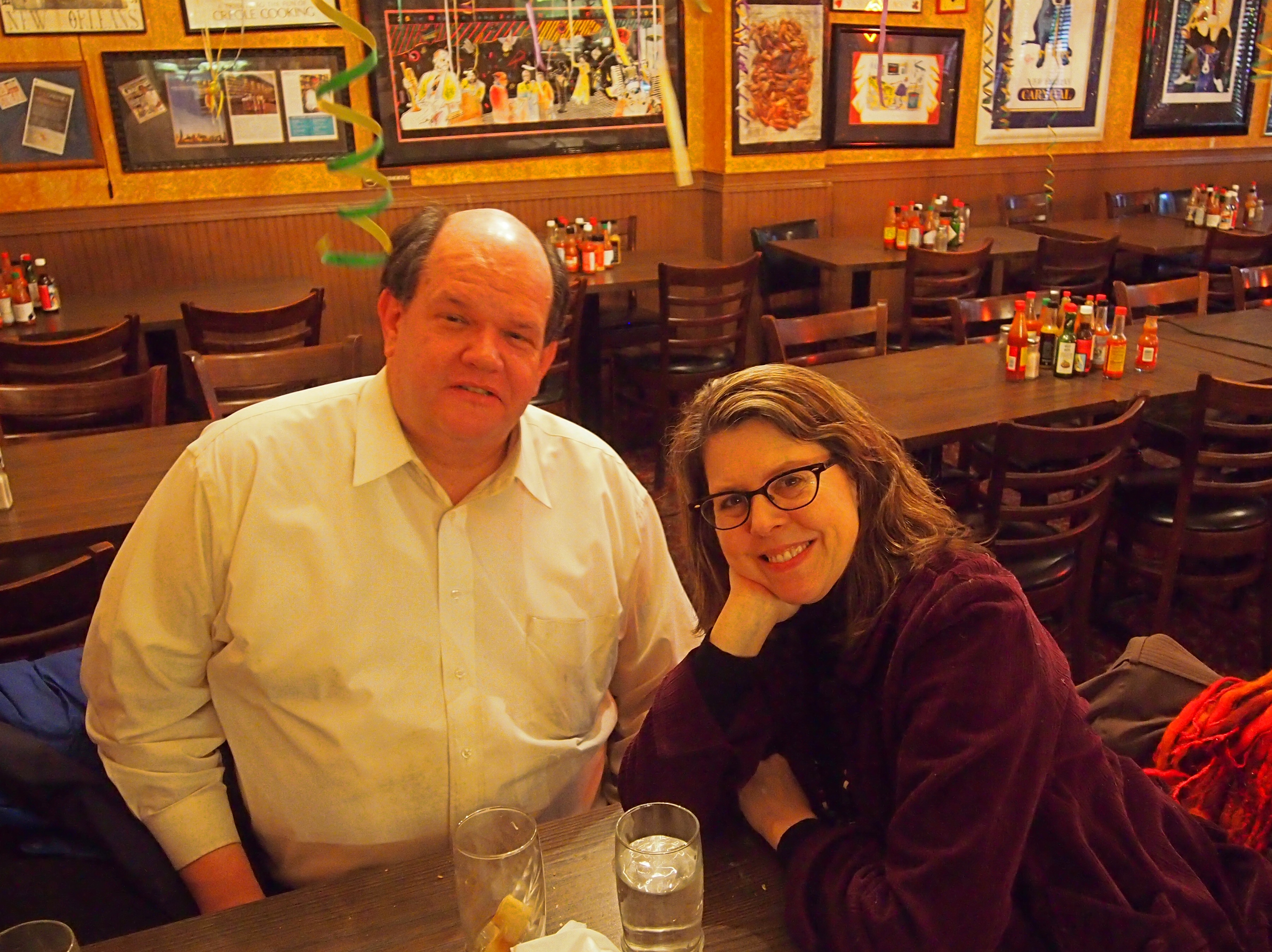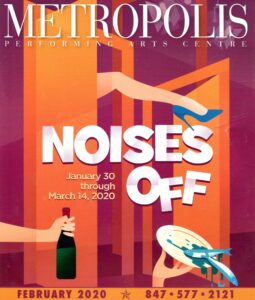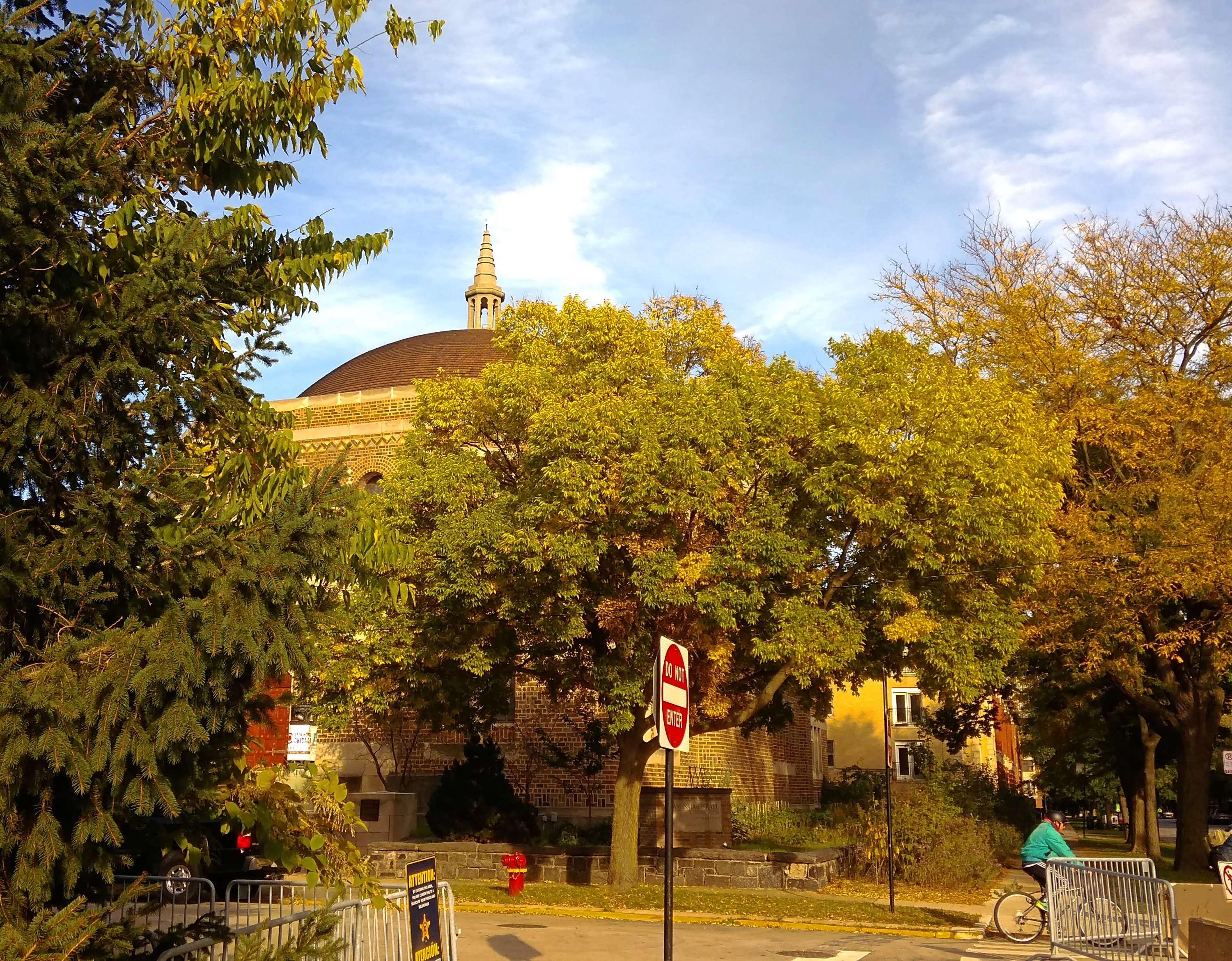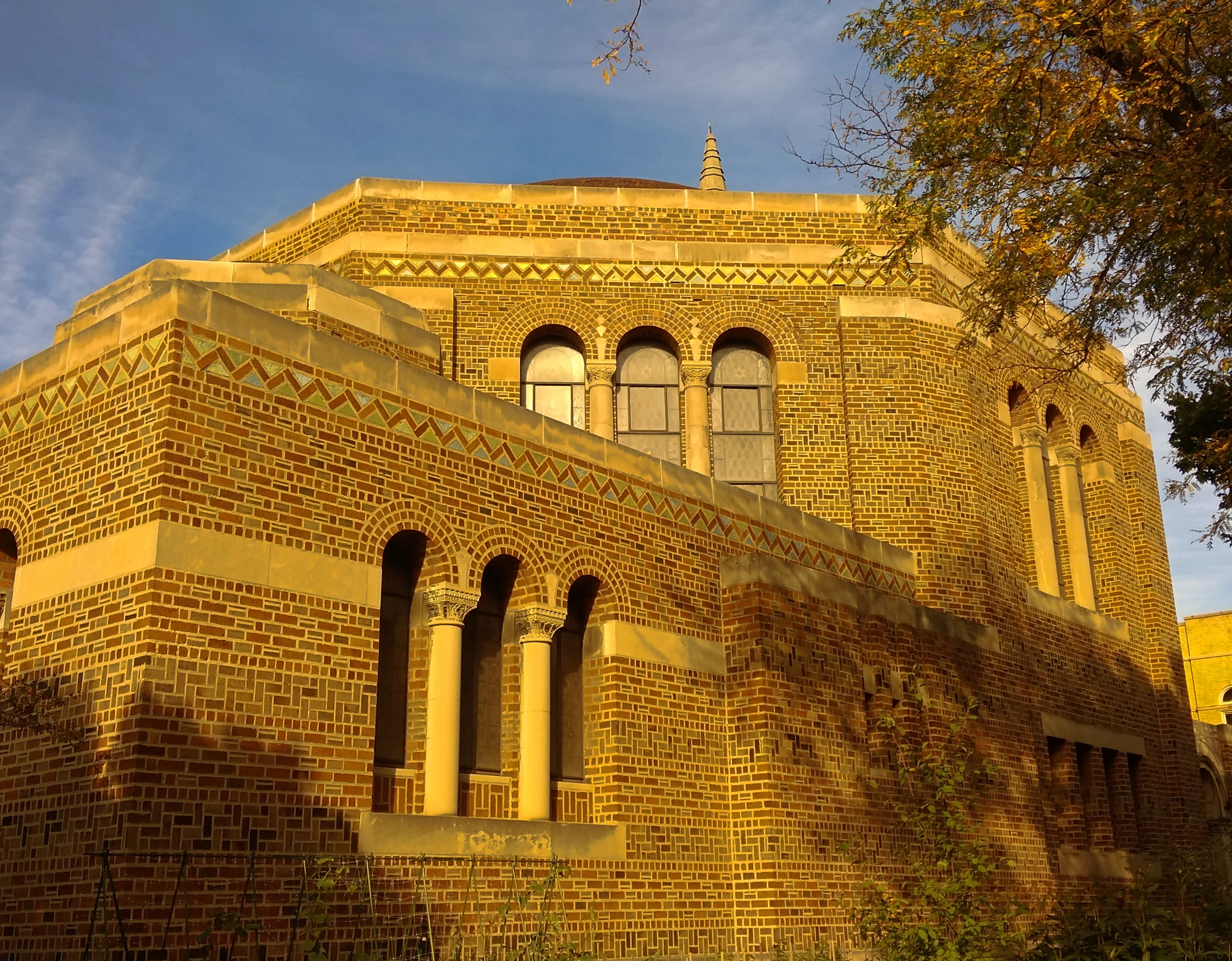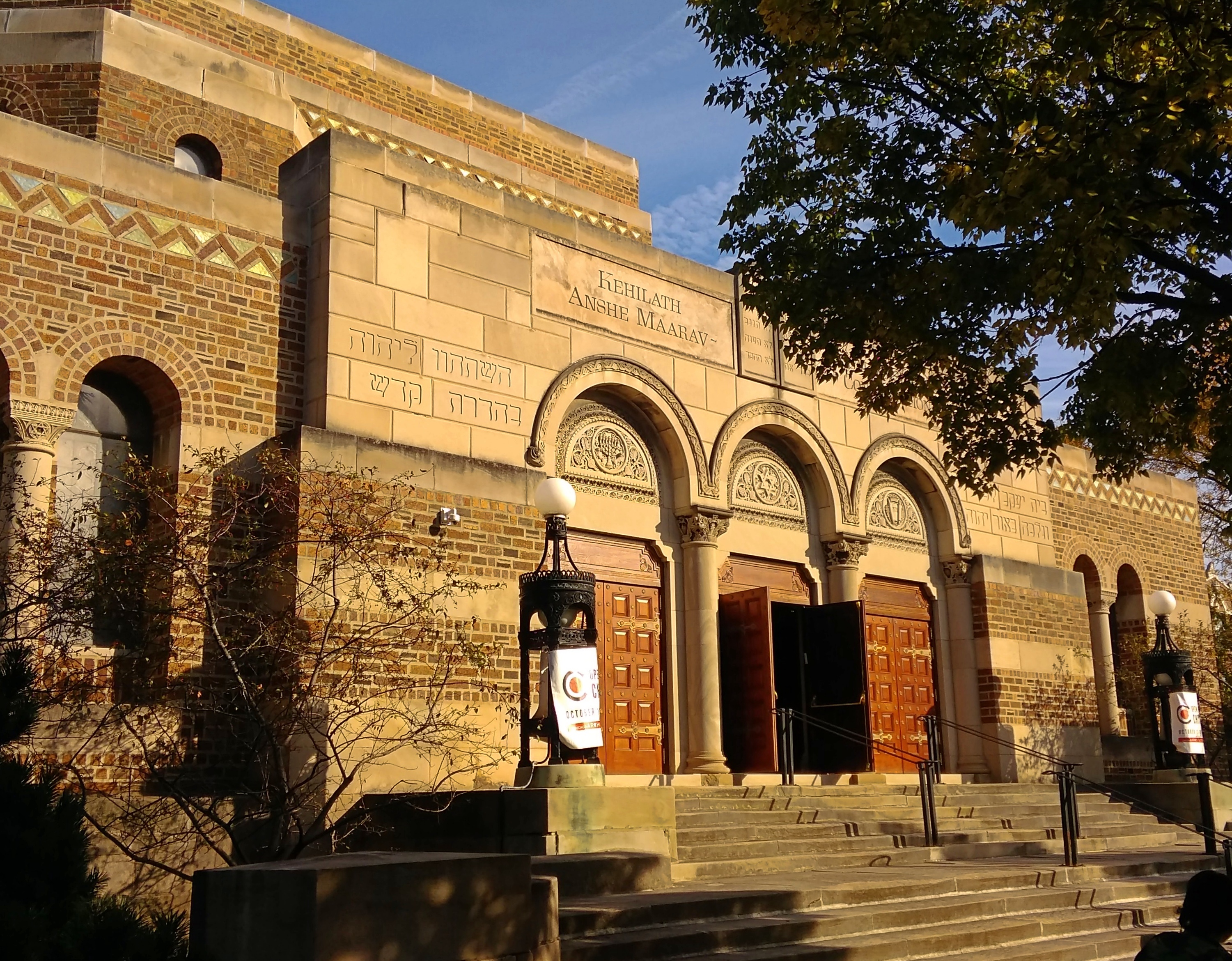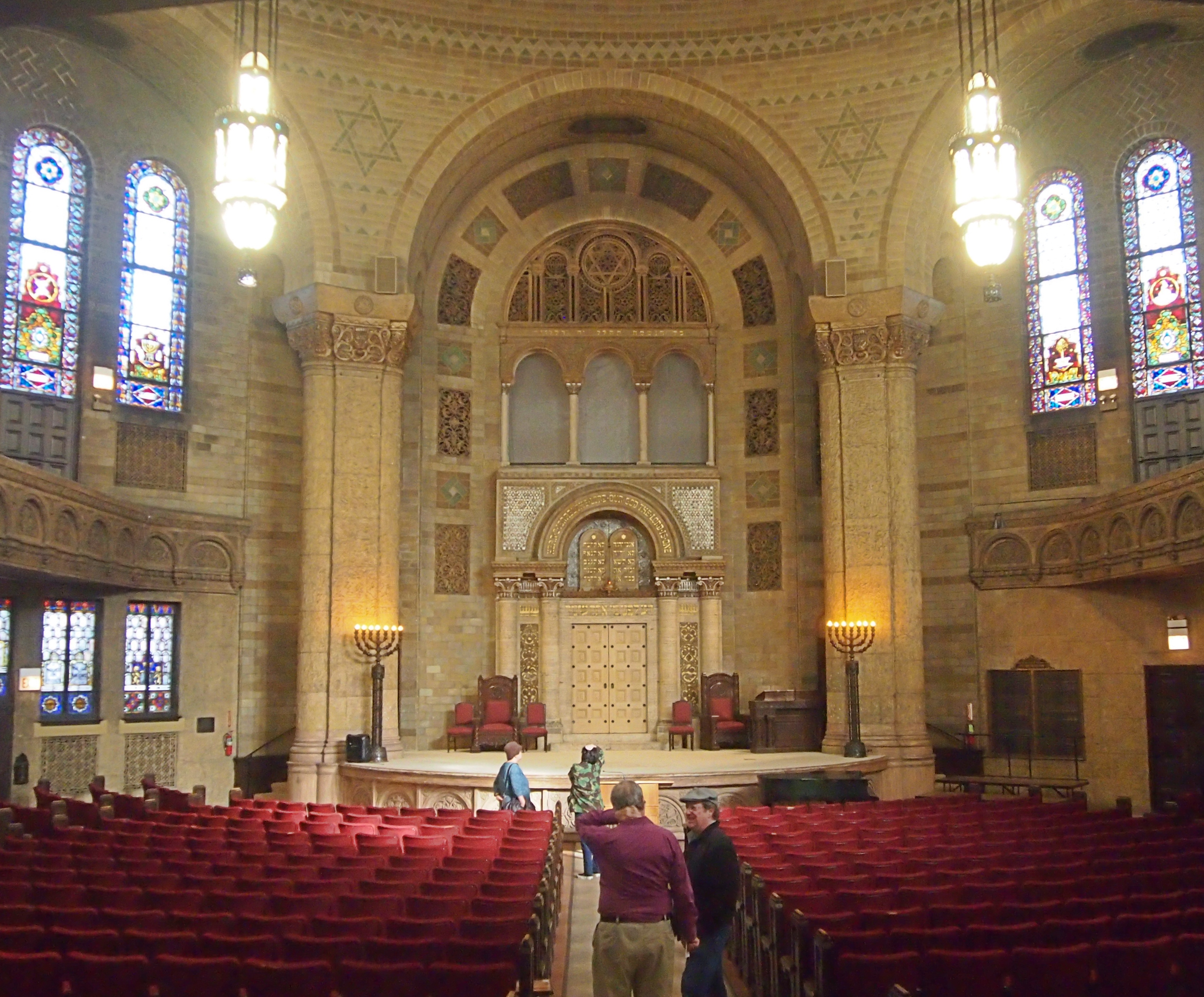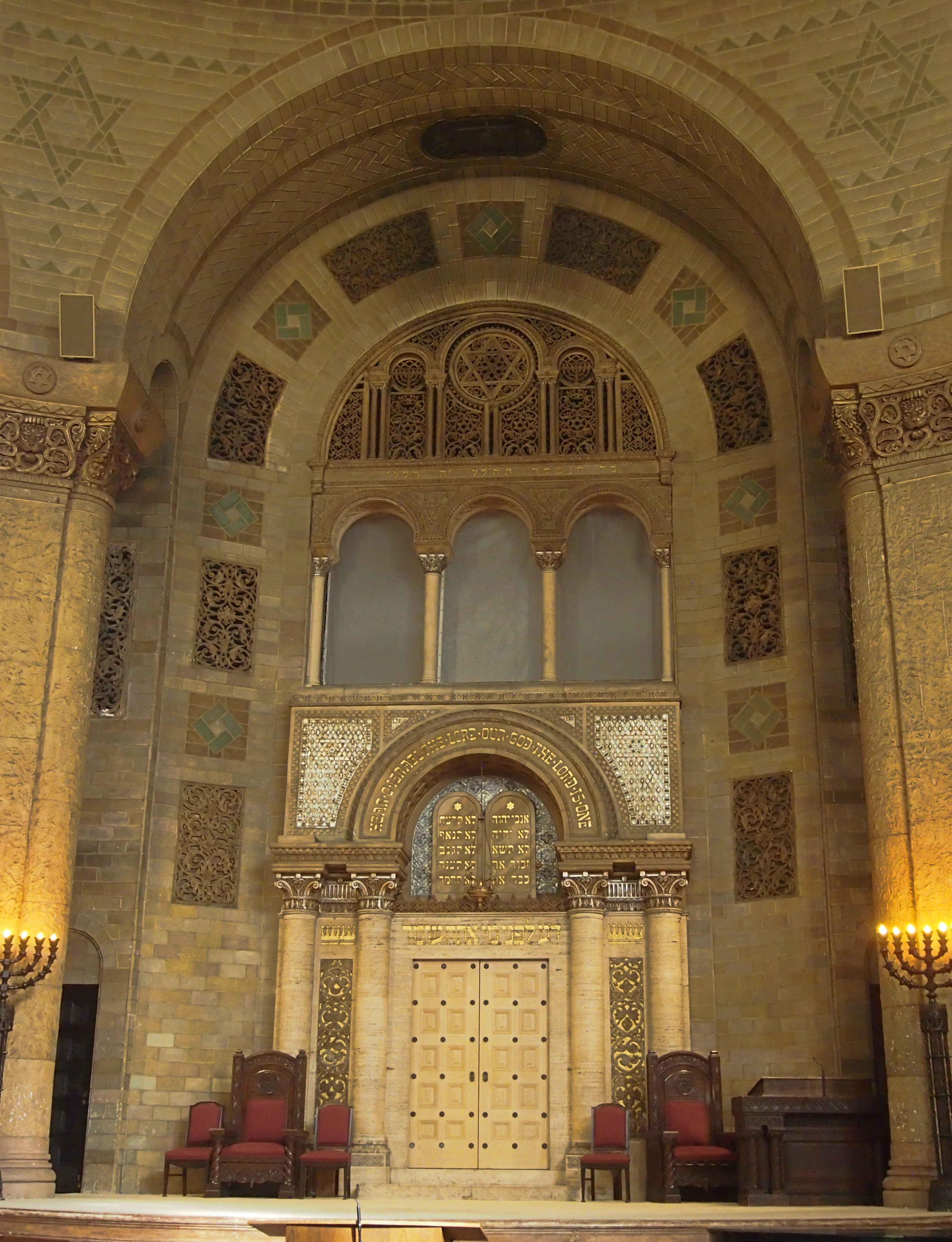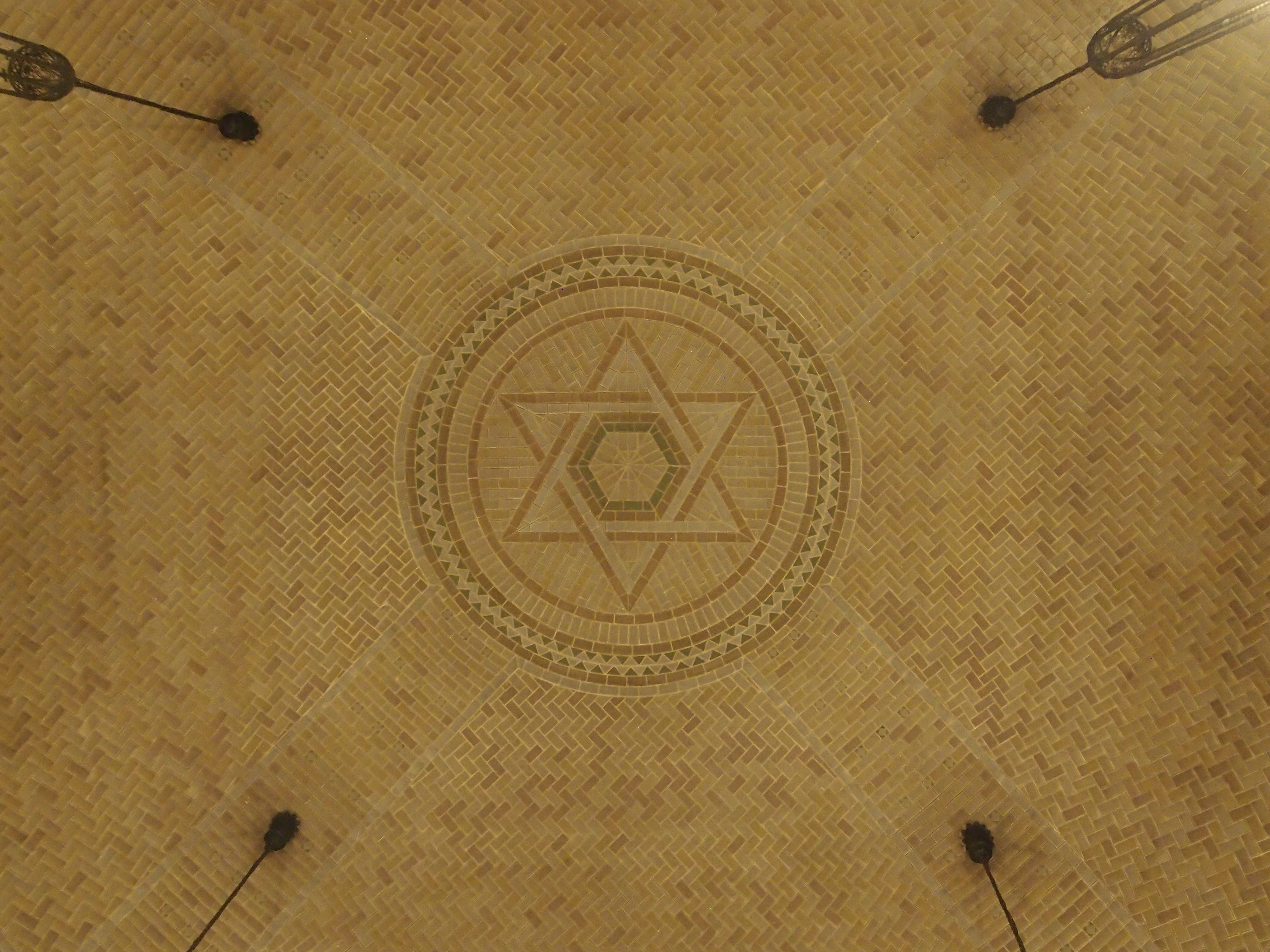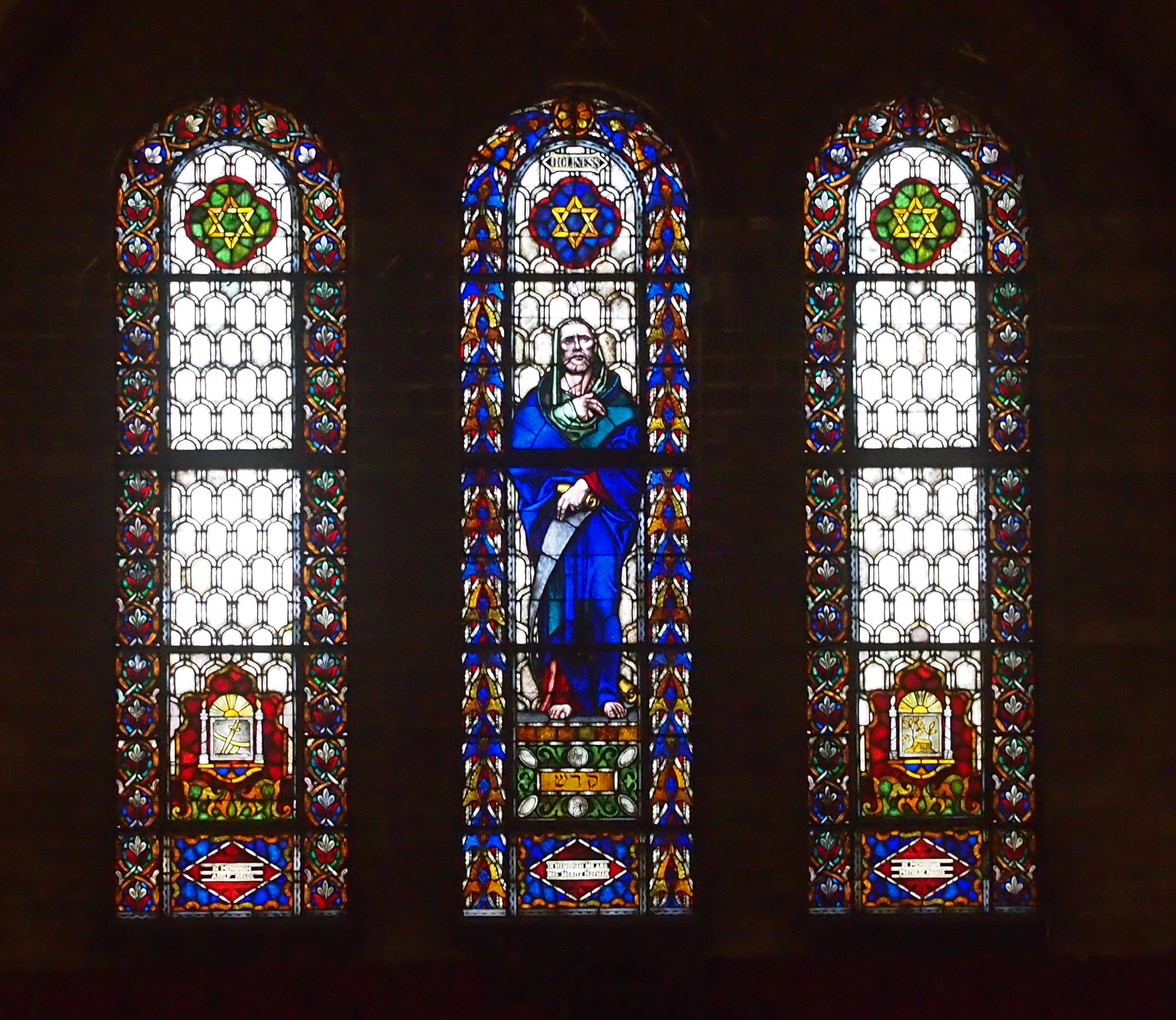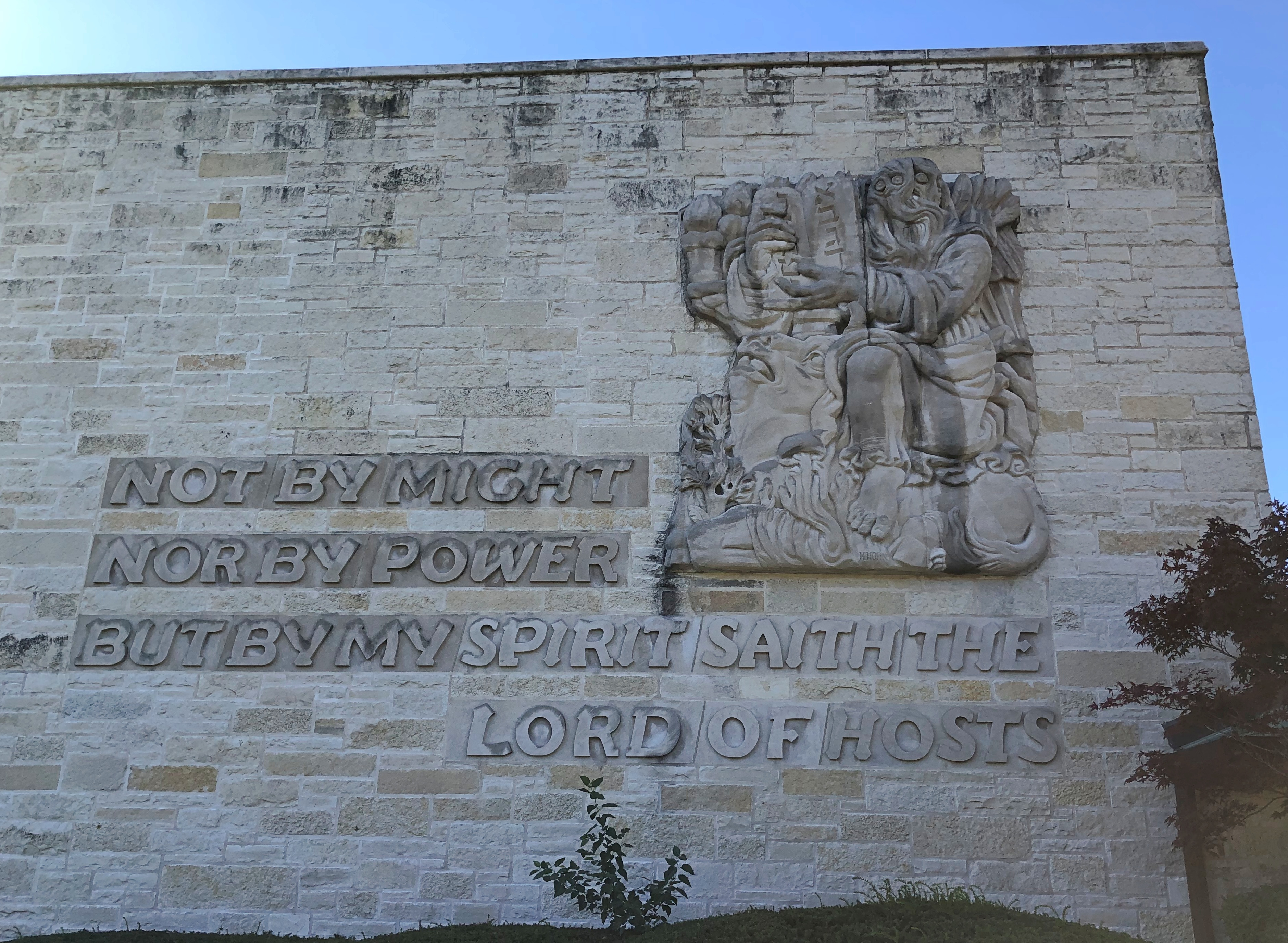Today would have been a pleasant day in February: rainy and in the 40s F. In May, you grumble: where’s my missing 30 degrees? The grass is lush and the trees are budding, but so what. When it finally gets warm, though, all will be forgotten.
After lunch on Saturday, I decided a good use of the afternoon would be to visit another sacred space I’d long known about, but never ventured inside, like the Chapel of St. James that morning. That meant an El ride north from downtown to the Loyola stop at the edge of the Rogers Park neighborhood, the northernmost bit of the city on Lake Michigan.
Years ago, I lived a few stops south of Loyola, and occasionally went there. Mostly to visit a bookstore on Sheridan just outside Loyola University’s Lake Shore campus — or was it two bookstores and a raft of other oddball retail? Looking around Sheridan now, there’s no trace of the late ’80s retail that once was there. That isn’t a surprise, but it’s a touch melancholic all the same.
Black Star was the name of the bookstore I remember best. An 1989 article in the Chicago Tribune noted: “Walk up a flight of stairs and you will enter a red and black labyrinth — two of the colors of the Holy Roman Empire`s coat of arms — containing thousands of used books, from dirt-cheap paperbacks to equally cheap hardcovers. There’s a tiny cafe in the back-six wooden tables surrounded by large ferns — where you can sip coffee and tea and munch on some pastries…
“Specialties: Psychology, religion, philosophy, literature, history, occult, art, language, film, romance, mystery, children’s, science, drama, science fiction. Particularly strong in the literature, philosophy and history of the European peoples.”
I bought a few books there. Just another lost bookstore now. I’ve known quite a few.
Back in the present, I walked through the Loyola campus and before long came to the Madonna della Strada Chapel, which is Loyola Chicago’s main chapel. Finished in 1939.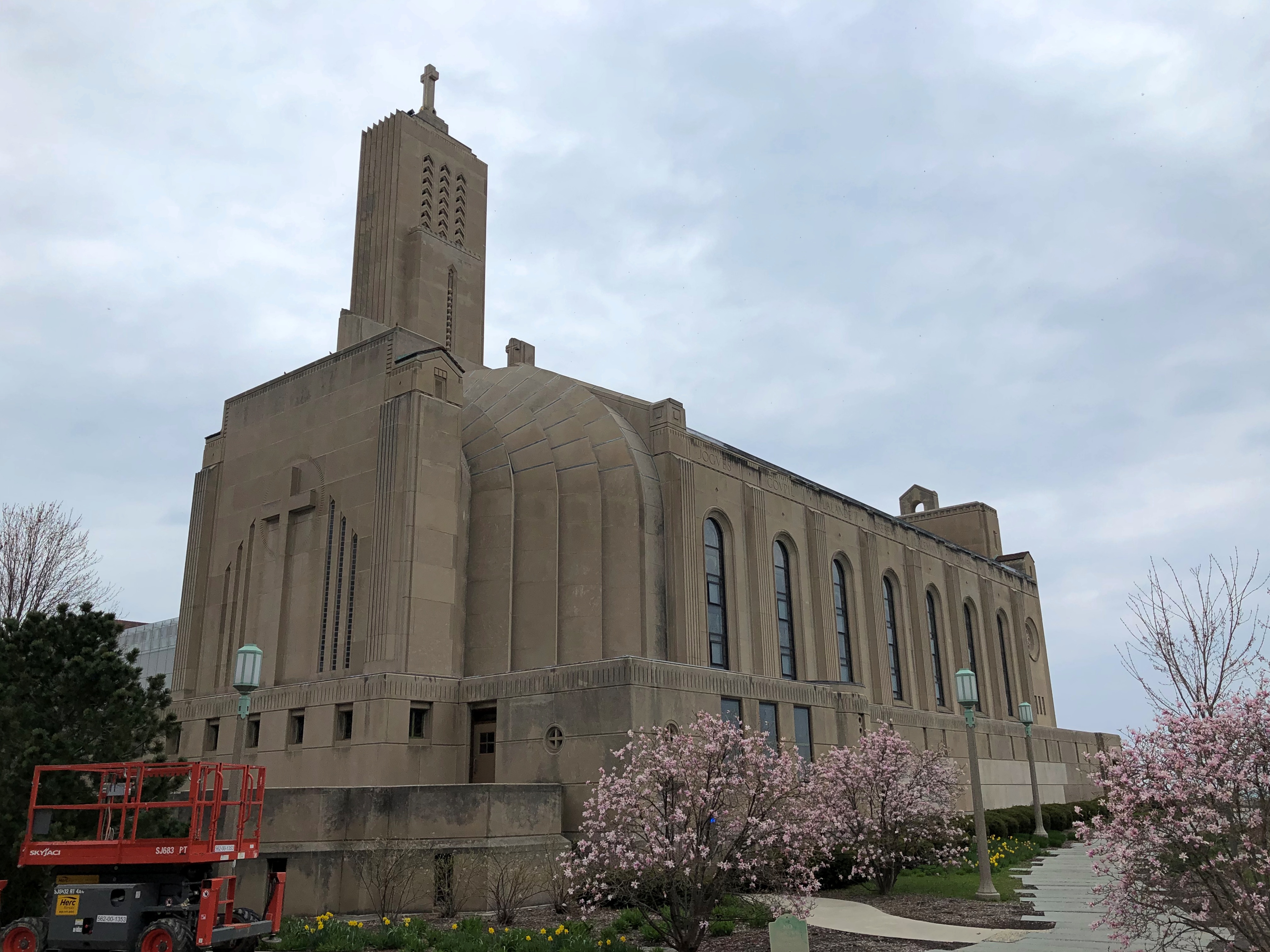
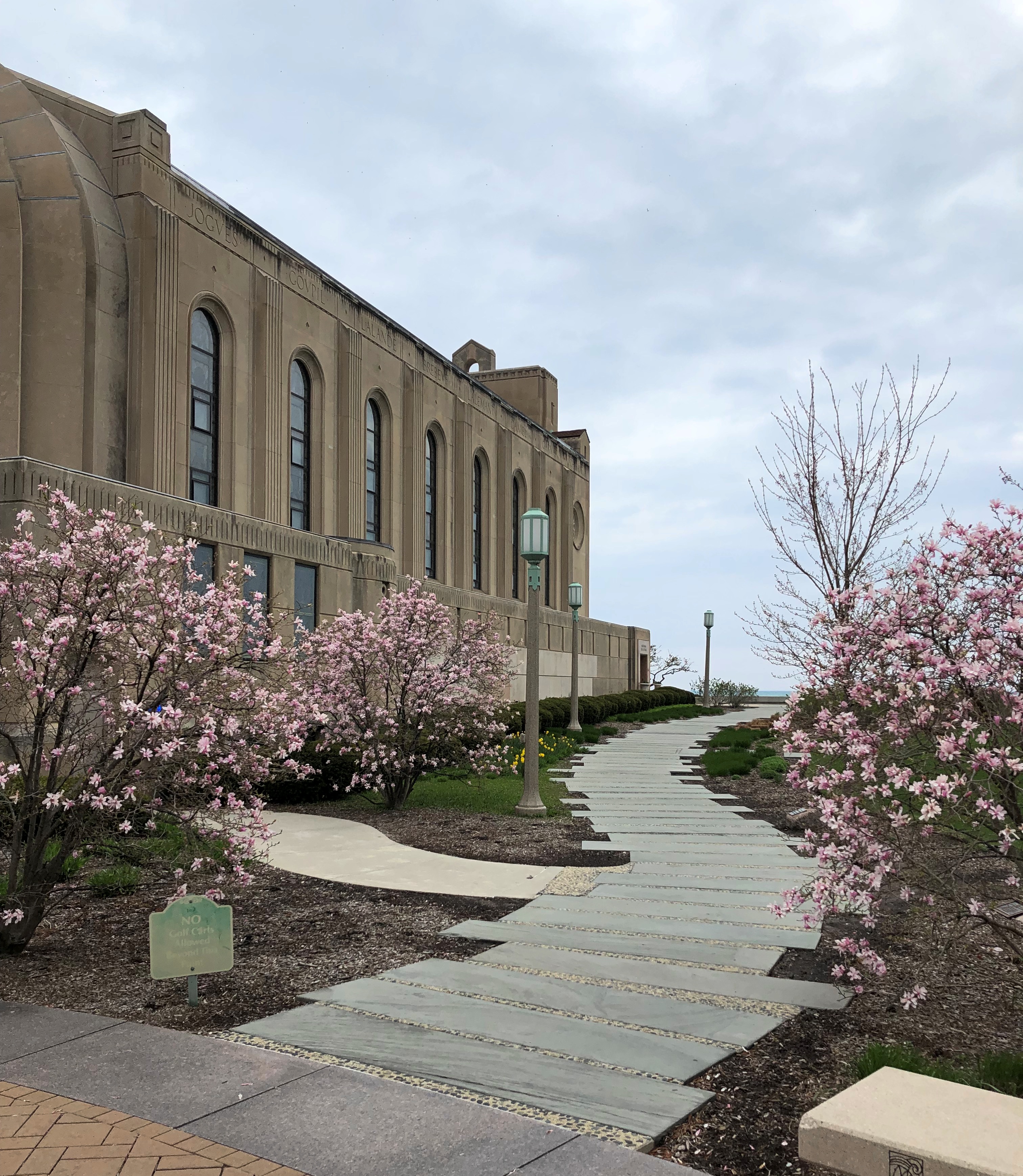
“The curving Art Moderne form is reminiscent of a small dirigible or airplane hanger,” the AIA Guide to Chicago says of the design by Chicago architect Andrew Rebori. “The walls of the apse are ‘accordioned’ — the folds filled with glass blocks, which admit slim slices of light. Names of famous Jesuits are crispy incised along the roofline; the tall tower is flat-topped and windowless.”
The entrance, which faces Lake Michigan.

I’ve read that it was put there in anticipation of facing a northward extension of Lake Shore Drive, presumably all the way to Evanston, but that never happened.
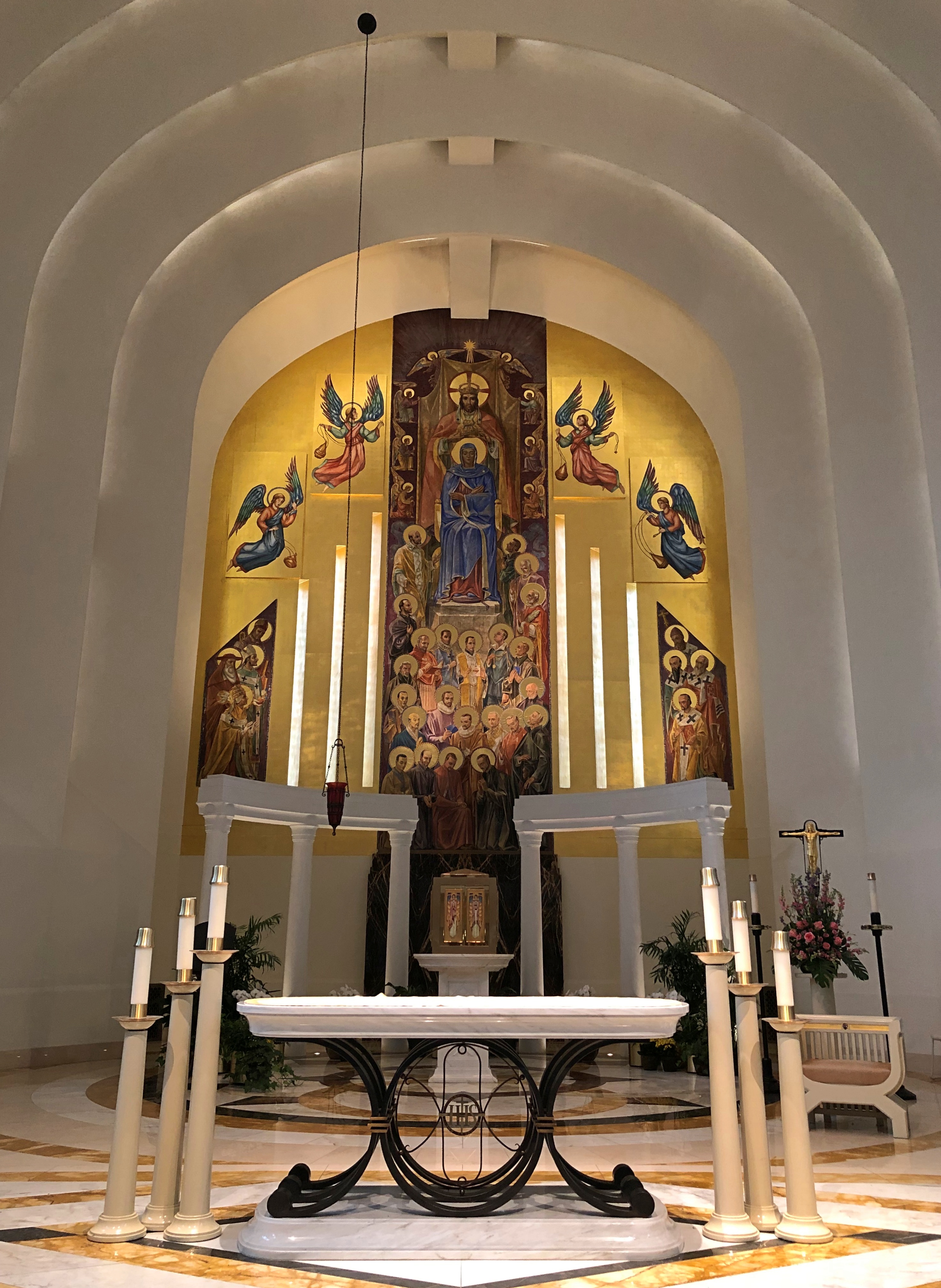
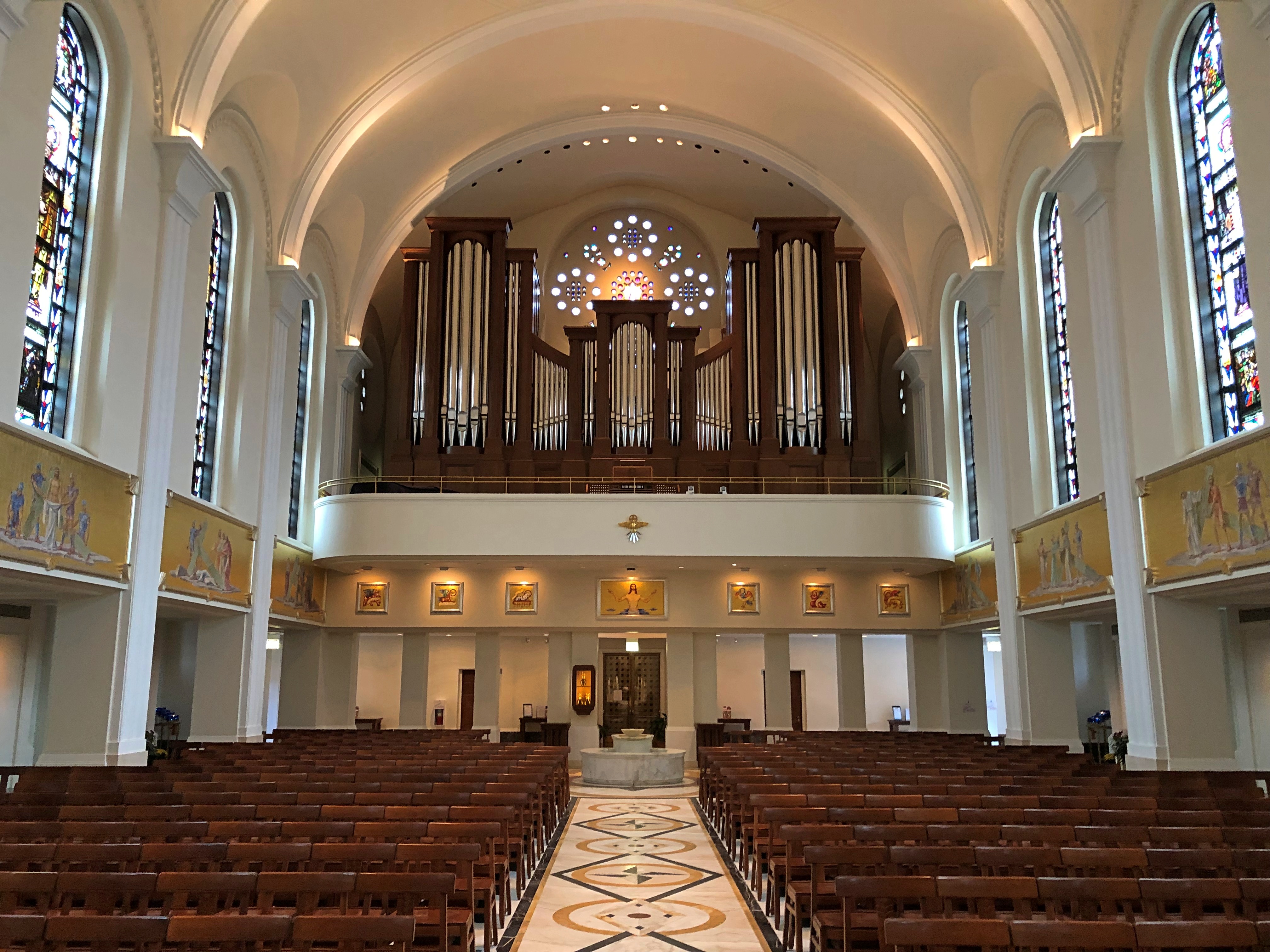
The stained glass is artful. My pictures of it, not so much — that’s a hard thing to photograph, in my experience. Other artwork was easier to capture.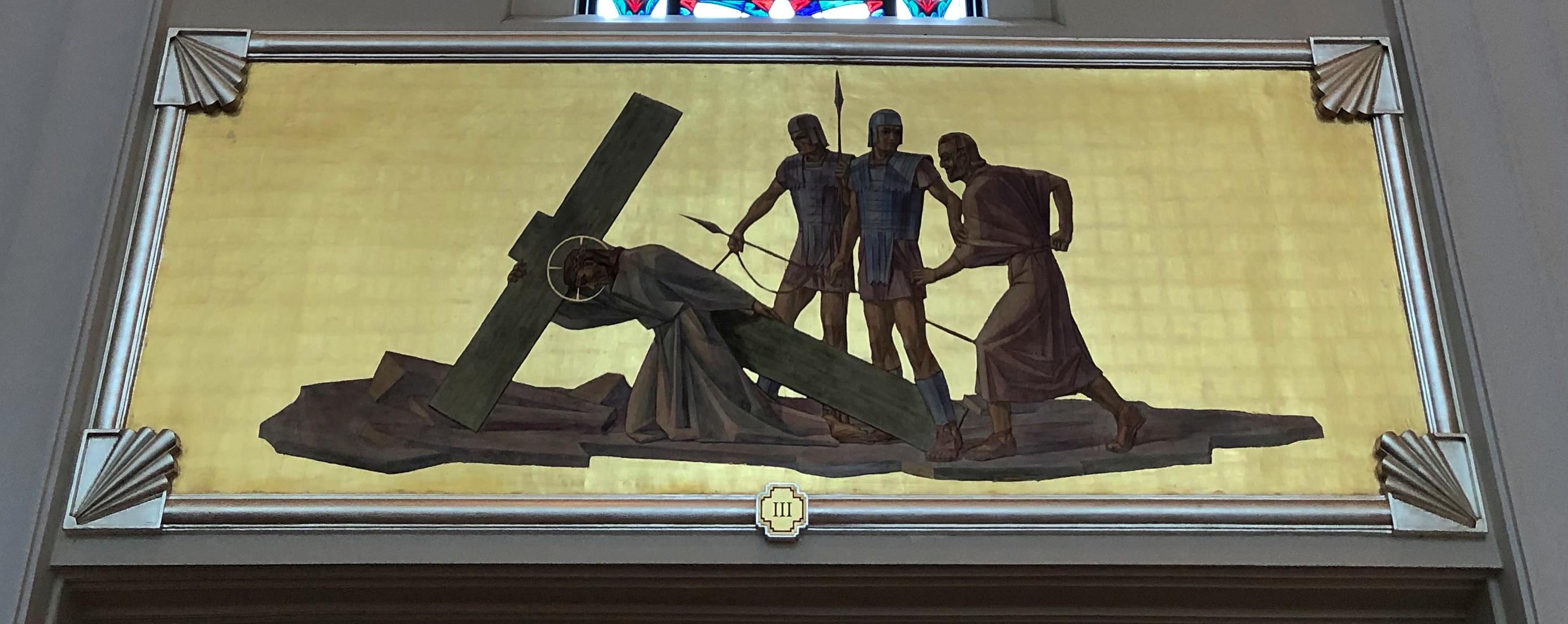
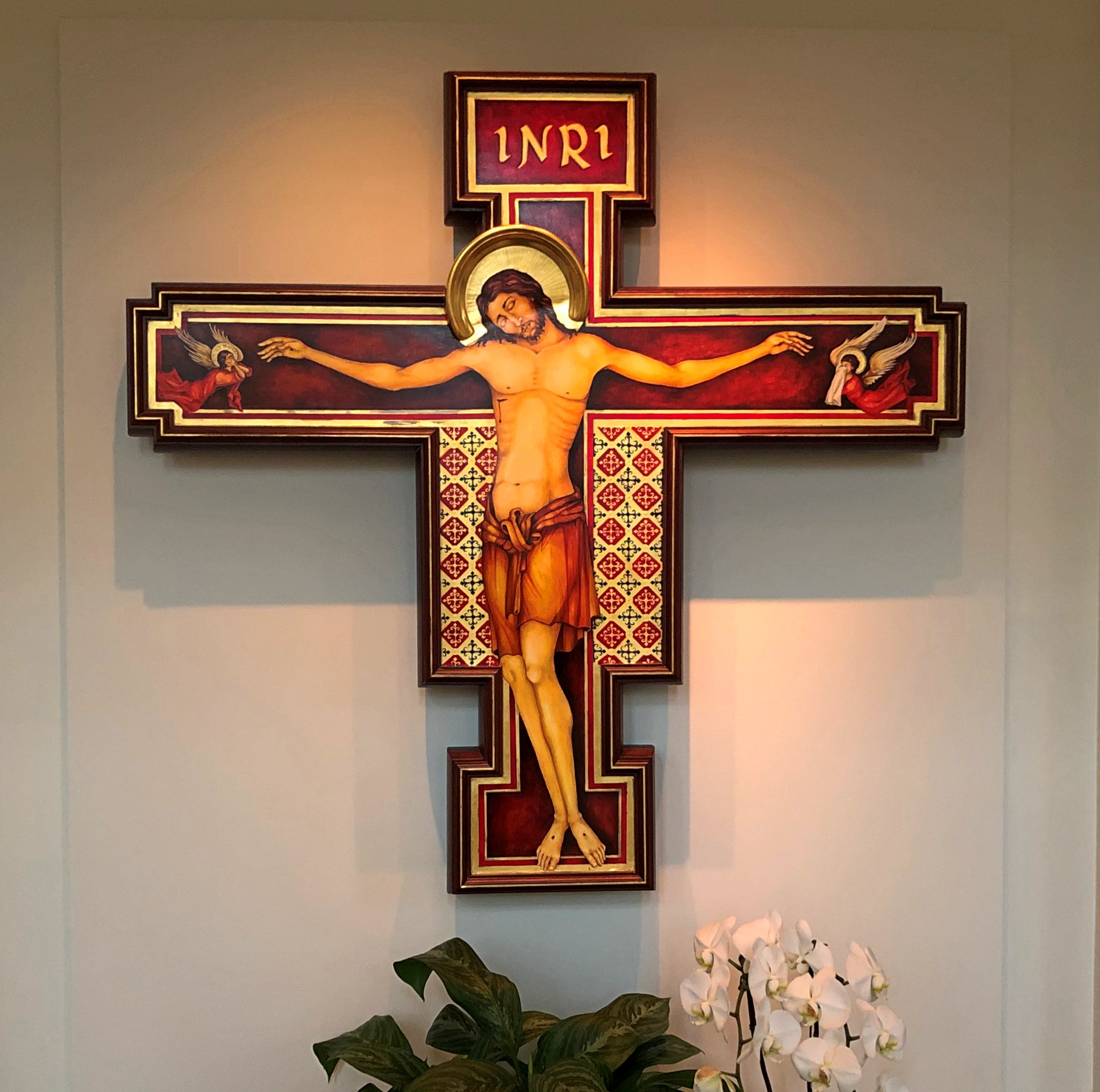
To the left, for instance, is René Goupil, S.J., venerated as the first Jesuit martyr of Canada, who took a Mohawk tomahawk to the head in the mid-17th century. It was a tough posting.
